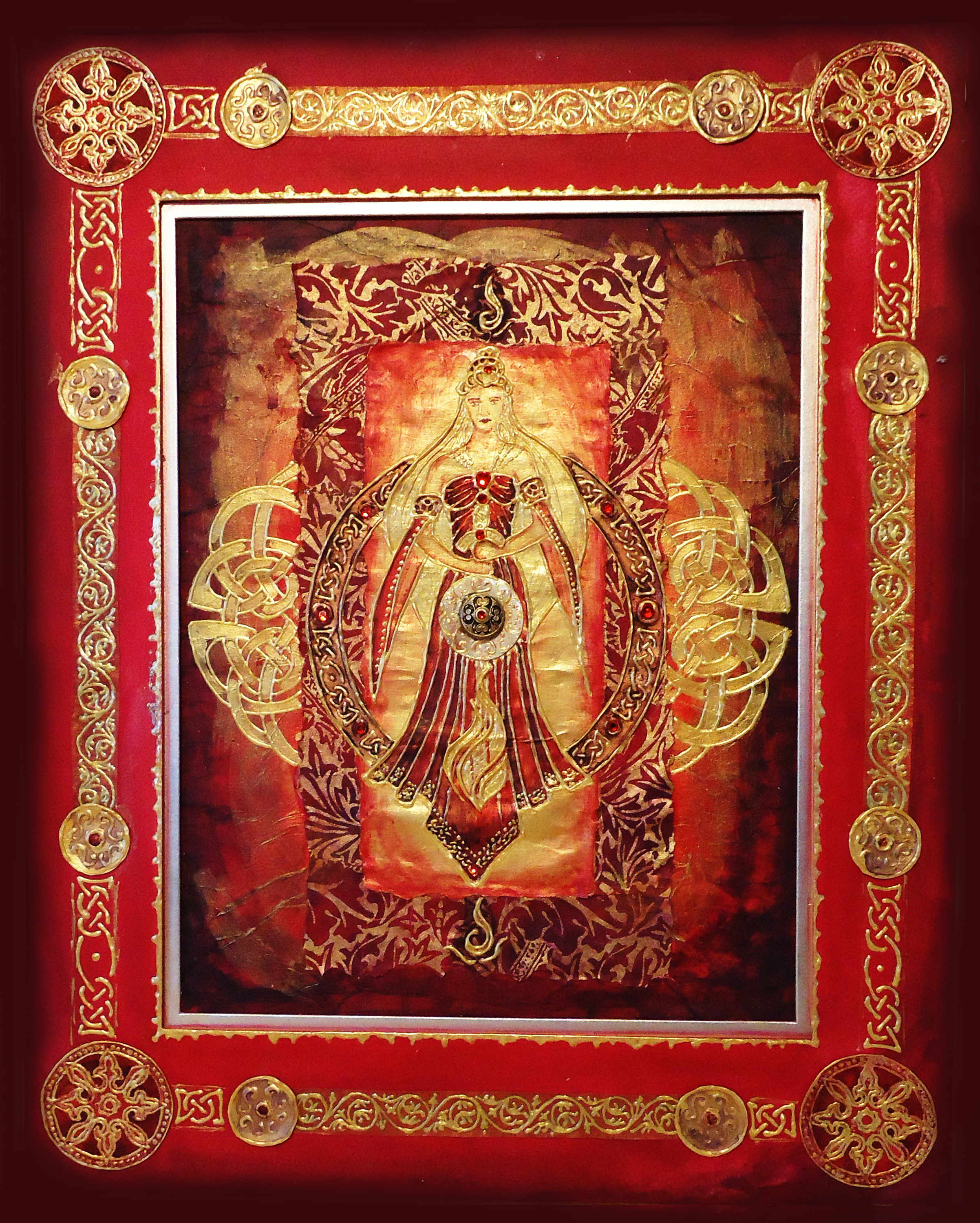I Looked At A Rapist In The Mirror And Saw Him Smiling Back.
Intense, and perhaps difficult to read, but this articulates so well what is meant by “rape culture.” We live in an ambient, unseen culture of sexual assault, and until we look at it in the mirror, look at these behaviors, look ourselves in the eye, we cannot move beyond this culture.
Originally posted on RaceBaitR:
*This piece has been published with permission of the referenced ex-partner. Other relationships may have been slightly altered to protect specific identities.*
The first time I was sexually assaulted I must have been 9 or 10 years old.
I was violated by two family friends who were brothers and who would have been about 14 and 15.
Or maybe that was the second time.
The first time might have been by an older female cousin around the same time. She pressured me to go into a closet and make out with her. I think we may have done more, but I don’t like to think about that.
I didn’t object to any of these interactions. I was too young for that to matter, of course, but it was difficult for me to make sense of the fact that I consented without having the agency to do so, thus I had…
View original 1,200 more words
Filed under: Uncategorized
The Sun Card and the Solstice for #TarotBlogHop

Solstice Alignment, by Shauna Aura Knight (Prints available on Redbubble)
PREVIOUS BLOG | MASTER LIST | NEXT BLOG
I somehow scored the Sun card on the Summer Solstice Tarot Blog Hop! I’ve always been fascinated by the solstices, even before I really understood what it was to be Pagan. I was obsessed with Druids and megaliths as a kid, and I even tried to track where the sun rose based on alignments from my window.
Before I look at the usual symbolism of a Tarot card, I like to go back in time before there was a Tarot deck, before the “established” esoteric and occult symbolism, to the source of what probably inspired a lot of those symbols in the first place.
People often talk about magic, and all the lost ancient knowledge, but a lot of “ancient magic” is stuff we can do on our cellphones these days. Thousands of years ago, it was magic to be able to track the cycles of the sun. To predict the equinoxes and solstices. Thousands of years ago, the “computer” was a stone alignment–With a pointer stone and a gateway or sight-line stone, you can tell when the sun has hit solstice.
Sol-stice means sun is standing still. The sun rises further and further north every day (in the Northern Hemisphere) until it stops. It will seem to rise in the same place for about three days, five if your alignment is a little loose, and then it’ll clearly start heading back south.
And on the winter solstice, the same. If you have two stones aligned, you can view it stand still, and then begin to return.
Why Were Calendars Magical?
For our ancient ancestors this kind of knowledge was crucial. We needed to know how much time we had left for the growing and harvest season. How long the winter would last. In modern times, that doesn’t really seem very magical. We just look at a calendar; we can see when the full moon and new moon are, the equinoxes, the solstices. We always know what time it is. Our phones give us the weather forecast. But remember when this was magic, when this was wisdom passed down from the witches/shamans/druids/priestesses/medicineworkers.
And similarly, the sun itself was seen as magic, as life force. In colder climates, the disappearance of the sun in winter means darkness and cold. And our ancient ancestors certainly knew that the energy of the sun was somehow connected to the growing season. Pretty easy connection there–sun = warmth = life force = growing = food = abundance.
The Sun and Dualism
One challenge I have with the sun image in modern esoteric and occult knowledge is how it’s become part of an inherently dualistic system. I’ve written before about dualism, but in a nutshell, dualism is the philosophical/religious idea that there is good and bad. Nondualism is the belief that there is no good or evil, that things just are.
Dualism becomes a problem because people tend to shoehorn everything into an opposing black/white duality. This duality then ends up (unwittingly) serving misogyny, racism, and other discrimination.
Many of the esoteric systems that modern Tarot is built on are based in dualistic systems.
The Kabballah and alchemy frequently look at things in terms of sun and moon, male and female, light and dark, white and black, transcendance and manifestation, heaven and earth. That in itself isn’t “bad,” however, it’s the dualistic tendency to lump things into Yes/No Good/Bad that becomes problematic.
- Sun/male/active/Heaven/light/white/good
- Moon/female/passive/Earth/dark/black/bad
In fact, I’d have to say that one of my major beefs with modern occult and esoteric symbolism is that it sometimes oversymbolizes the symbol and warps it out of context.
Whenever I’m working with Tarot cards, or with anything that has a heap of occult and esoteric symbolic knowledge associated with it, I like to look at the cultural context of those symbols. If the sun is associated with maleness and “good,” and the moon or the earth is associated with femaleness and “bad,” that’s not really a set of symbols I want to be working with. At least, not in that way.

The Rising Sun, by Shauna Aura Knight
Return to the Source
In those instances, I like to go back to the source–the actual sun and its role in our year, in our lives. We depend on the sun for warmth, for the growing season, for everything we eat. When I was newly-come to Paganism I was very much into moon vs. sun, darkness, shadow…and I wore a lot of black…but eventually I came to reconnect with the sun itself, and to my own sunlight.
I just recently wrote an article for Eternal Haunted Summer on how I came to “reclaim my sunshine” as it were. I had always been shy, reclusive, but I wanted to become more. I wanted to learn to be a better leader, a better public speaker…but to do that I needed to be willing to shine. And I did.
It took a lot of personal and spiritual work.
The Sun is Outside, Not a Card
Connecting to the energies of the sun doesn’t necessarily require you to read a Tarot book, learn astrology, or become an expert in Kabballah. The Sun Card may be a piece of paper, and there may be plenty of books written about the symbolism, but the sun is outside. It’s in the sky. You can see the sunlight, feel it, almost smell it.
Go outside. Feel the sunlight on your skin. Think about how you respond to the sun during the course of the year. Is there a point during the winter when you crave the sunlight? Is there a point during the summer when the sun and heat are too much? Are there things you can only do during the daytime hours because you require the light? How do you feel when the sun sets, when the sun rises?
Can you hear how the animals around you respond to the sun? Where I live, the birds start their dawn song before the sun comes up.

Sun and the Tree of Life by Shauna Aura Knight
Sun and Science
I think that science and magic are inextricably linked. And yeah…maybe that takes some of the “magic’ out of it for some. Not for me. Knowing that a shooting star is a meteorite entering our atmosphere doesn’t make it any less cool. And knowing about the science of the sun doesn’t make that less cool either.
In fact, the more I think about it, the more I begin to wonder how this amazing universe of ours even came to be…how our planet is somehow in that perfect distance from the sun where life can be sustained. How the reaction of the elements within the sun and the gravity strike the perfect balance that allows something like the sun to even exist. Stars, suns, supernovae, black holes…it’s all incredibly fascinating stuff.
Metaphysical Maps
I’m not suggesting throwing the baby out with the bathwater, so to speak. The sun card is associated (among other things) with confidence, warmth, life force, abundance, vitality, power, energy, luck, wellness, enthusiasm, enlightenment, illumination, brilliance, joy, radiance. I don’t think that those are wrong.
It’s more that I believe we often confuse the metaphysical and cosmological models like astrology, Kabballah, and Tarot with the universe these models are trying to describe. There’s the saying, the map is not the terrain, and I think it applies here. Our ancestors came up with these models and they’ve served a purpose, and continue to serve. But don’t ever confuse the models, metaphors, and symbols for the terrain they describe.
The universe is a vast and deep place. It’s likely that in a few hundred years, the scientific models we use today to understand physics and subatomic particles and the stars will be just as scientifically archaic as alchemy is to modern chemistry. And our modern computers will be as outdated and clunky as the megalithic calendar computers our ancestors carved in stone.
And yet, metaphor and myth and symbol still have their place, still have their power. There’s a reason that our dreams speak to us in the language of symbol, that myths hold their potency after thousands of years. When we divorce science from spirit, when we separate out that deep mythic aspect, we lose a piece of ourselves.
What is the Sun?
The sun hasn’t changed. It’s still the rising light that burns away the morning mist, the life-giving radiance that gives us enough light to see and work, the warmth to melt the snow and bring the harvest to fruition. The sun still sets in amber-blood brilliance before the silence of the dark and the stars settle over us again.
If you’re working with the Sun card in the Tarot–or any card, for that matter–and you’re caught up in the esoteric symbolism, think for a moment about the symbol before the symbol. Think about how this symbol came to be. Think about how this symbol came to have all those trappings and associations. Think about what inspired the people who created the Tarot, who created astrology and kabballah and alchemy. Think about whether or not those symbols and correspondences fit your values and your work.
And then let the sun itself inspire you.
Note: Artwork and illustrations above are available on my Etsy and Redbubble pages. See other examples of my work here on my blog. 15% off sale code JUNE2015 on Etsy.
Continue on the Tarot Blog hop:
PREVIOUS BLOG | MASTER LIST | NEXT BLOG
Filed under: Magic, Personal Growth Tagged: #tarotbloghop, archaeoastronomy, megaliths, Personal growth, solstice, solstices, summer solstice, sun, sun card, Tarot
The Sun Card and the Solstice for #TarotBlogHop

Solstice Alignment, by Shauna Aura Knight (Prints available on Redbubble)
PREVIOUS BLOG | MASTER LIST | NEXT BLOG
I somehow scored the Sun card on the Summer Solstice Tarot Blog Hop! I’ve always been fascinated by the solstices, even before I really understood what it was to be Pagan. I was obsessed with Druids and megaliths as a kid, and I even tried to track where the sun rose based on alignments from my window.
Before I look at the usual symbolism of a Tarot card, I like to go back in time before there was a Tarot deck, before the “established” esoteric and occult symbolism, to the source of what probably inspired a lot of those symbols in the first place.
People often talk about magic, and all the lost ancient knowledge, but a lot of “ancient magic” is stuff we can do on our cellphones these days. Thousands of years ago, it was magic to be able to track the cycles of the sun. To predict the equinoxes and solstices. Thousands of years ago, the “computer” was a stone alignment–With a pointer stone and a gateway or sight-line stone, you can tell when the sun has hit solstice.
Sol-stice means sun is standing still. The sun rises further and further north every day (in the Northern Hemisphere) until it stops. It will seem to rise in the same place for about three days, five if your alignment is a little loose, and then it’ll clearly start heading back south.
And on the winter solstice, the same. If you have two stones aligned, you can view it stand still, and then begin to return.
Why Were Calendars Magical?
For our ancient ancestors this kind of knowledge was crucial. We needed to know how much time we had left for the growing and harvest season. How long the winter would last. In modern times, that doesn’t really seem very magical. We just look at a calendar; we can see when the full moon and new moon are, the equinoxes, the solstices. We always know what time it is. Our phones give us the weather forecast. But remember when this was magic, when this was wisdom passed down from the witches/shamans/druids/priestesses/medicineworkers.
And similarly, the sun itself was seen as magic, as life force. In colder climates, the disappearance of the sun in winter means darkness and cold. And our ancient ancestors certainly knew that the energy of the sun was somehow connected to the growing season. Pretty easy connection there–sun = warmth = life force = growing = food = abundance.
The Sun and Dualism
One challenge I have with the sun image in modern esoteric and occult knowledge is how it’s become part of an inherently dualistic system. I’ve written before about dualism, but in a nutshell, dualism is the philosophical/religious idea that there is good and bad. Nondualism is the belief that there is no good or evil, that things just are.
Dualism becomes a problem because people tend to shoehorn everything into an opposing black/white duality. This duality then ends up (unwittingly) serving misogyny, racism, and other discrimination.
Many of the esoteric systems that modern Tarot is built on are based in dualistic systems.
The Kabballah and alchemy frequently look at things in terms of sun and moon, male and female, light and dark, white and black, transcendance and manifestation, heaven and earth. That in itself isn’t “bad,” however, it’s the dualistic tendency to lump things into Yes/No Good/Bad that becomes problematic.
- Sun/male/active/Heaven/light/white/good
- Moon/female/passive/Earth/dark/black/bad
In fact, I’d have to say that one of my major beefs with modern occult and esoteric symbolism is that it sometimes oversymbolizes the symbol and warps it out of context.
Whenever I’m working with Tarot cards, or with anything that has a heap of occult and esoteric symbolic knowledge associated with it, I like to look at the cultural context of those symbols. If the sun is associated with maleness and “good,” and the moon or the earth is associated with femaleness and “bad,” that’s not really a set of symbols I want to be working with. At least, not in that way.

The Rising Sun, by Shauna Aura Knight
Return to the Source
In those instances, I like to go back to the source–the actual sun and its role in our year, in our lives. We depend on the sun for warmth, for the growing season, for everything we eat. When I was newly-come to Paganism I was very much into moon vs. sun, darkness, shadow…and I wore a lot of black…but eventually I came to reconnect with the sun itself, and to my own sunlight.
I just recently wrote an article for Eternal Haunted Summer on how I came to “reclaim my sunshine” as it were. I had always been shy, reclusive, but I wanted to become more. I wanted to learn to be a better leader, a better public speaker…but to do that I needed to be willing to shine. And I did.
It took a lot of personal and spiritual work.
The Sun is Outside, Not a Card
Connecting to the energies of the sun doesn’t necessarily require you to read a Tarot book, learn astrology, or become an expert in Kabballah. The Sun Card may be a piece of paper, and there may be plenty of books written about the symbolism, but the sun is outside. It’s in the sky. You can see the sunlight, feel it, almost smell it.
Go outside. Feel the sunlight on your skin. Think about how you respond to the sun during the course of the year. Is there a point during the winter when you crave the sunlight? Is there a point during the summer when the sun and heat are too much? Are there things you can only do during the daytime hours because you require the light? How do you feel when the sun sets, when the sun rises?
Can you hear how the animals around you respond to the sun? Where I live, the birds start their dawn song before the sun comes up.

Sun and the Tree of Life by Shauna Aura Knight
Sun and Science
I think that science and magic are inextricably linked. And yeah…maybe that takes some of the “magic’ out of it for some. Not for me. Knowing that a shooting star is a meteorite entering our atmosphere doesn’t make it any less cool. And knowing about the science of the sun doesn’t make that less cool either.
In fact, the more I think about it, the more I begin to wonder how this amazing universe of ours even came to be…how our planet is somehow in that perfect distance from the sun where life can be sustained. How the reaction of the elements within the sun and the gravity strike the perfect balance that allows something like the sun to even exist. Stars, suns, supernovae, black holes…it’s all incredibly fascinating stuff.
Metaphysical Maps
I’m not suggesting throwing the baby out with the bathwater, so to speak. The sun card is associated (among other things) with confidence, warmth, life force, abundance, vitality, power, energy, luck, wellness, enthusiasm, enlightenment, illumination, brilliance, joy, radiance. I don’t think that those are wrong.
It’s more that I believe we often confuse the metaphysical and cosmological models like astrology, Kabballah, and Tarot with the universe these models are trying to describe. There’s the saying, the map is not the terrain, and I think it applies here. Our ancestors came up with these models and they’ve served a purpose, and continue to serve. But don’t ever confuse the models, metaphors, and symbols for the terrain they describe.
The universe is a vast and deep place. It’s likely that in a few hundred years, the scientific models we use today to understand physics and subatomic particles and the stars will be just as scientifically archaic as alchemy is to modern chemistry. And our modern computers will be as outdated and clunky as the megalithic calendar computers our ancestors carved in stone.
And yet, metaphor and myth and symbol still have their place, still have their power. There’s a reason that our dreams speak to us in the language of symbol, that myths hold their potency after thousands of years. When we divorce science from spirit, when we separate out that deep mythic aspect, we lose a piece of ourselves.
What is the Sun?
The sun hasn’t changed. It’s still the rising light that burns away the morning mist, the life-giving radiance that gives us enough light to see and work, the warmth to melt the snow and bring the harvest to fruition. The sun still sets in amber-blood brilliance before the silence of the dark and the stars settle over us again.
If you’re working with the Sun card in the Tarot–or any card, for that matter–and you’re caught up in the esoteric symbolism, think for a moment about the symbol before the symbol. Think about how this symbol came to be. Think about how this symbol came to have all those trappings and associations. Think about what inspired the people who created the Tarot, who created astrology and kabballah and alchemy. Think about whether or not those symbols and correspondences fit your values and your work.
And then let the sun itself inspire you.
Note: Artwork and illustrations above are available on my Etsy and Redbubble pages. See other examples of my work here on my blog. 15% off sale code JUNE2015 on Etsy.
Continue on the Tarot Blog hop:
PREVIOUS BLOG | MASTER LIST | NEXT BLOG
Filed under: Magic, Personal Growth Tagged: #tarotbloghop, archaeoastronomy, megaliths, Personal growth, solstice, solstices, summer solstice, sun, sun card, Tarot
Artwork & Jewelry Sale
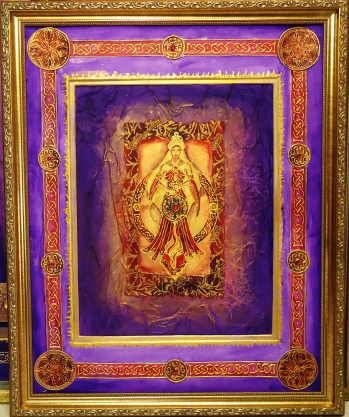 Someone recently pointed out to me that I haven’t ever actually posted any of my artwork (or how you can buy it) on my blog. Whoops! That was silly of me.
Someone recently pointed out to me that I haven’t ever actually posted any of my artwork (or how you can buy it) on my blog. Whoops! That was silly of me.
Since my laptop is slowly dying after all the heavy work I’ve put it through the past 5 years with writing, publishing, graphic design, video editing, and sound recording, I thought this might be an excellent time for such a post…as well as a good time to offer a sale on my artwork and jewelry.
I’ve used my own artwork and graphic design work to illustrate my blog posts, articles, and in my books. In fact, I do most of my own book covers. I’ve also been vending my artwork at Pagan festivals and conferences for the past years, as well doing the occasional commissioned piece.
I’m always greatly honored when people send me photos of how they’ve used my artwork for in their altars and shrines. It’s probably one of my most favorite things ever; sometimes it makes me cry. The good crying, of course!
Here are a few places you can get some of my artwork, jewelry, and digital designs, and there’s information about hiring me to do graphic design as well.
Etsy: https://www.etsy.com/shop/ShaunaAuraKnight
I’ve started uploading items into my Etsy shop again. I have several paintings, journals, and prints there and in the coming weeks I’ll be listing more of those. (If there’s an painting below that you like let me know and I can make a listing for it sooner.)
I also have about a hundred pieces of beaded jewelry listed there. I’m available to do custom work; I have a few commissions at the moment so I’d be getting to yours after that, but that also allows us to do a payment plan for your piece if needed.
For the next few weeks I’m offering a 15% off sale of anything in my Etsy shop over $20, just use code JUNE2015













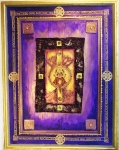


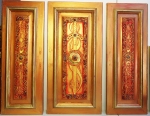




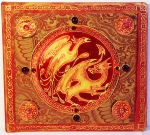

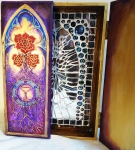

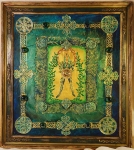


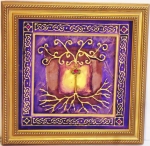




Redbubble: http://www.redbubble.com/people/shaunaknight/portfolio
I have several of my designs available as t-shirts, totes, and prints, at my Redbubble page. While I’m not offering a specific sale on these, Redbubble frequently offers 20% off sales, so it’s worth joining their email list if you have your eye on something and waiting for a sale. The tote bags and T-shirts come out quite nicely; I’ve been waiting for a long time for a printer that can do a good job with lush illustrations on a dark background.




Graphic Design Portfolio:
http://shaunaknightarts.wordpress.com
I’m an artist as well as a professional graphic designer, and the below link will take you to my portfolio with designs I’ve done as well as information on my design consulting. If you’re interested in hiring a graphic designer and my style works for you, send me a message and we can talk about your project. I offer reasonable prices and I like being able to offer quality work to entrepreneurial folks on a budget.
*Note: I do sometimes offer to do magazine covers (and very occasionally book covers) for trade. I recently did the cover for Green Egg magazine in exchange for advertising. This depends greatly upon my time availability but I’m willing to consider proposals. Contact me at ShaunaAura (at) gmail (dot) com.


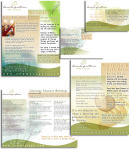



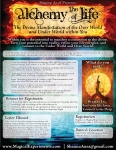






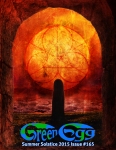



Pinterest: https://www.pinterest.com/shaunaaura/
This isn’t so much about anything on sale, but I do have pictures of my artwork and jewelry on my Pinterest pages. I’ve also started pinning character inspirations for some of my fiction novels, so if you are a Pinterest geek, come on over, there’s some fun stuff, and I’ll be adding to this as I go along.
Thanks for giving my work a look!
Please consider posting a link to this blog, or to my Etsy on your own social media. Feel free to share the JUNE2015 code for 15% off with your friends as well!
Filed under: Artwork Tagged: artwork, graphic design, jewelry, sale
Artwork & Jewelry Sale
 Someone recently pointed out to me that I haven’t ever actually posted any of my artwork (or how you can buy it) on my blog. Whoops! That was silly of me.
Someone recently pointed out to me that I haven’t ever actually posted any of my artwork (or how you can buy it) on my blog. Whoops! That was silly of me.
Since my laptop is slowly dying after all the heavy work I’ve put it through the past 5 years with writing, publishing, graphic design, video editing, and sound recording, I thought this might be an excellent time for such a post…as well as a good time to offer a sale on my artwork and jewelry.
I’ve used my own artwork and graphic design work to illustrate my blog posts, articles, and in my books. In fact, I do most of my own book covers. I’ve also been vending my artwork at Pagan festivals and conferences for the past years, as well doing the occasional commissioned piece.
I’m always greatly honored when people send me photos of how they’ve used my artwork for in their altars and shrines. It’s probably one of my most favorite things ever; sometimes it makes me cry. The good crying, of course!
Here are a few places you can get some of my artwork, jewelry, and digital designs, and there’s information about hiring me to do graphic design as well.
Etsy: https://www.etsy.com/shop/ShaunaAuraKnight
I’ve started uploading items into my Etsy shop again. I have several paintings, journals, and prints there and in the coming weeks I’ll be listing more of those. (If there’s an painting below that you like let me know and I can make a listing for it sooner.)
I also have about a hundred pieces of beaded jewelry listed there. I’m available to do custom work; I have a few commissions at the moment so I’d be getting to yours after that, but that also allows us to do a payment plan for your piece if needed.
For the next few weeks I’m offering a 15% off sale of anything in my Etsy shop over $20, just use code JUNE2015

































Redbubble: http://www.redbubble.com/people/shaunaknight/portfolio
I have several of my designs available as t-shirts, totes, and prints, at my Redbubble page. While I’m not offering a specific sale on these, Redbubble frequently offers 20% off sales, so it’s worth joining their email list if you have your eye on something and waiting for a sale. The tote bags and T-shirts come out quite nicely; I’ve been waiting for a long time for a printer that can do a good job with lush illustrations on a dark background.




Graphic Design Portfolio:
http://shaunaknightarts.wordpress.com
I’m an artist as well as a professional graphic designer, and the below link will take you to my portfolio with designs I’ve done as well as information on my design consulting. If you’re interested in hiring a graphic designer and my style works for you, send me a message and we can talk about your project. I offer reasonable prices and I like being able to offer quality work to entrepreneurial folks on a budget.
*Note: I do sometimes offer to do magazine covers (and very occasionally book covers) for trade. I recently did the cover for Green Egg magazine in exchange for advertising. This depends greatly upon my time availability but I’m willing to consider proposals. Contact me at ShaunaAura (at) gmail (dot) com.

















Pinterest: https://www.pinterest.com/shaunaaura/
This isn’t so much about anything on sale, but I do have pictures of my artwork and jewelry on my Pinterest pages. I’ve also started pinning character inspirations for some of my fiction novels, so if you are a Pinterest geek, come on over, there’s some fun stuff, and I’ll be adding to this as I go along.
Thanks for giving my work a look!
Please consider posting a link to this blog, or to my Etsy on your own social media. Feel free to share the JUNE2015 code for 15% off with your friends as well!
Filed under: Artwork Tagged: artwork, graphic design, jewelry, sale
“I Don’t Believe in Purification” by Shauna Aura Knight
Originally posted on Humanistic Paganism:
I’m a Pantheist. I believe that the entirety of the world, of the universe, is divine. So the idea of “making sacred space” or “purifying” doesn’t really fit into my theology or cosmology. On the other hand, a lot of the ritual facilitation work that I do is about working with people and their processes. I tend to think as psychology as a kind of magic because it works to understand people and how they work, and for me, those patterns and processes are a part of our nature, and thus, part of the divine as well.
 Psychology, architecture, the process of pilgrimage, and the hero’s journey show us that we need steps in order to change our state of consciousness.
Psychology, architecture, the process of pilgrimage, and the hero’s journey show us that we need steps in order to change our state of consciousness.
For me, the part of the ritual that is often referred to as “making sacred space” is more about getting everyone involved in the ritual into the right mindset…
View original 1,614 more words
Filed under: Uncategorized
“I Don’t Believe in Purification” by Shauna Aura Knight
Originally posted on Humanistic Paganism:
I’m a Pantheist. I believe that the entirety of the world, of the universe, is divine. So the idea of “making sacred space” or “purifying” doesn’t really fit into my theology or cosmology. On the other hand, a lot of the ritual facilitation work that I do is about working with people and their processes. I tend to think as psychology as a kind of magic because it works to understand people and how they work, and for me, those patterns and processes are a part of our nature, and thus, part of the divine as well.
 Psychology, architecture, the process of pilgrimage, and the hero’s journey show us that we need steps in order to change our state of consciousness.
Psychology, architecture, the process of pilgrimage, and the hero’s journey show us that we need steps in order to change our state of consciousness.
For me, the part of the ritual that is often referred to as “making sacred space” is more about getting everyone involved in the ritual into the right mindset…
View original 1,614 more words
Filed under: Uncategorized
Dream: Mysterious Dragon Wings Instrument
As I write down my various dreams for fiction inspiration, or as inspiration for my next book on Dreamwork, I thought I’d continue posting some of them here. In this case, I’m definitely going to have to work this mysterious dragon instrument into one of my fantasy books..
In the dream, I was driving in my van, then arrived to be a guest presenter at a Pagan Pride Day festival in Ohio. A woman from the (now defunct) Chicago Reclaiming was one of the organizers. The venue where the Pagan Pride Day (PPD) was being held was also a Renaissance Faire during the faire season, and the main info table for the PPD was outside of one of the nicer booths.
The guy running that booth made these things out of wood and brass, and his flagship/most expensive pieces were these wooden boards with two dragons made in brass, the dragons facing away from each other so their wings pointed back toward one another.
The wings either touched, or there was a string connecting them, and the instrument made a sound like a shruti box or hurdy gurdy when played. It was an intense, gorgeous, multi-harmonic sound. The wings almost seemed to glow when it was played.
It seemed that sometimes it was played like a hurdy gurdy, sometimes it was played with a bow over the single string, though at the end it seemed that tension springs were part of the sound.
The vendor was trying to talk me into buying one, and he was offering me a presenter discount, but the items were about $600 or so. However, we tried one out to see if I’d be able to sing a chant over it, as the sound field was quite loud. A bunch of people were suddenly standing around me waiting for me to sing. I got nervous, and couldn’t remember the lyrics to any chants. Finally I remembered The Ocean Refuses No River and started singing that. I was able to sing louder than the dragon instrument, but it made a great overlayer sound/texture.
Filed under: Dreamwork
Dream: Mysterious Dragon Wings Instrument
As I write down my various dreams for fiction inspiration, or as inspiration for my next book on Dreamwork, I thought I’d continue posting some of them here. In this case, I’m definitely going to have to work this mysterious dragon instrument into one of my fantasy books..
In the dream, I was driving in my van, then arrived to be a guest presenter at a Pagan Pride Day festival in Ohio. A woman from the (now defunct) Chicago Reclaiming was one of the organizers. The venue where the Pagan Pride Day (PPD) was being held was also a Renaissance Faire during the faire season, and the main info table for the PPD was outside of one of the nicer booths.
The guy running that booth made these things out of wood and brass, and his flagship/most expensive pieces were these wooden boards with two dragons made in brass, the dragons facing away from each other so their wings pointed back toward one another.
The wings either touched, or there was a string connecting them, and the instrument made a sound like a shruti box or hurdy gurdy when played. It was an intense, gorgeous, multi-harmonic sound. The wings almost seemed to glow when it was played.
It seemed that sometimes it was played like a hurdy gurdy, sometimes it was played with a bow over the single string, though at the end it seemed that tension springs were part of the sound.
The vendor was trying to talk me into buying one, and he was offering me a presenter discount, but the items were about $600 or so. However, we tried one out to see if I’d be able to sing a chant over it, as the sound field was quite loud. A bunch of people were suddenly standing around me waiting for me to sing. I got nervous, and couldn’t remember the lyrics to any chants. Finally I remembered The Ocean Refuses No River and started singing that. I was able to sing louder than the dragon instrument, but it made a great overlayer sound/texture.
Filed under: Dreamwork Tagged: dragon, dreams, Dreamwork, instrument, singing
Dreams of the Past
 Ever have one of those dreams about someone for your past that is so compelling, you dive into Google to try and find out what they are up to these days? A few days ago I had a dream about a guy I had a crush on in high school. I was a freshman, he was a senior…I thought I was being so subtle and keeping things under wraps…it wasn’t til after he graduated that I found out that pretty much everyone knew about my crush.
Ever have one of those dreams about someone for your past that is so compelling, you dive into Google to try and find out what they are up to these days? A few days ago I had a dream about a guy I had a crush on in high school. I was a freshman, he was a senior…I thought I was being so subtle and keeping things under wraps…it wasn’t til after he graduated that I found out that pretty much everyone knew about my crush.
Oxytocin is a hell of a thing, isn’t it? I’ve been wondering a lot since then why I developed such a crush on him. It’s not like I frequently crush on people. And there are perfectly nice guys that I’ve dated and felt nothing for. Oxytocin is sometimes called the “falling in love” hormone. It’s also the hormone released during labor.
All these years later, I’m still not sure why I had such a thing for this guy. In my dream, the guy I had a crush on had some kind of head injury or brain injury and I was trying to take care of him. It was a disturbing enough dream that I felt compelled to look him up, which took a little obsessive Google searching.
Without going too much into the woo-woo, I’ve dreamed the future before. One of the reasons I started writing down my dreams, and one of the reasons I wrote a book on dreamwork, is because I have had a number of precognitive dreams. Some dreams have that particular “ping” to them that nudges me to take an action, even if it’s just doing some research. Last year I had a dream about a train derailment that pretty much matched a derailment that happened in New York. Precognitive dreams aren’t really super useful for predicting and changing the future; usually they are fairly vague, and if they are specific, it’s often too late to do anything about it.
Plus there’s the “what would you actually do” factor. I had dreams about skyscrapers falling for a decade before 9-11, and dreams of a terrorist attack just two days before. What am I going to do, call the Pentagon and tell them about my dream?
Even so, whenever I get one of these intense dreams I like to dig around and find out anything I can.
It took some time, but I eventually found a marriage announcement from a few years back which gave me some of his school and job history. Ultimately that led me to his LinkedIn profile, but that’s where the trail stops. It’s an unsettling feeling to have that dream-emotion-compulsion to find out what’s going on, but to not be able to find out answers. This isn’t the first time it’s happened, and probably won’t be the last.
More than anything, this has me thinking about romance, and story, and attraction, and why we fall for the people we do. I often ask myself, is it just chemistry? Is it just oxytocin? I once heard about a study that says that heterosexual women are attracted to men that smell different from their fathers, and by smell, specifically that meant the men were genetically different from their fathers, and that they had a different immune system. Apparently we can detect that in pheromones.
But then there’s also brain attraction. A few years ago I met someone online and he and I clicked together so quickly that we both committed to meeting up even though it was long distance. And we had great chemistry in person, though things didn’t end up working out long term.
Dreams like the one I had stick with me for a while. It’s those potent dreams that are often the foundation of a lot of my fiction. And in this case, it has me thinking about romance in books. So often I see people reviewing books where they can’t possibly believe that the hero and heroine just fell for each other like that. But I know I’ve experienced that kind of unstoppable chemistry. In my case, it’s always been one-sided, but I know that it happens where it’s reciprocated. Sometimes we fall for someone and there isn’t a reason. Maybe it’s pheromones. Maybe it’s oxytocin. Maybe it’s a soulmate. Who knows.
For that matter–just because we fall for someone, doesn’t mean it’s going to work out. That’s one I’ve learned the hard way too.
I have no real desire to ever see this guy again; my crush is long gone and mostly I’m embarrassed for how I acted. If it weren’t horrifically socially awkward, I’d be happy to offer him an apology if I caused him any embarrassment too. Mostly at this point I’m interested in knowing if my dream was giving me a flash of warning about something going on in his life, or if it was just the usual “brain dredging up things from subconscious” types of dreamwork.
Or maybe it’s just the inspiration that I need to finish up my second book on dreamwork.
How about you? Ever have one of those dreams that just sticks with you? Or a dream that came true?
Filed under: Dreamwork
Blogs and Resources Update
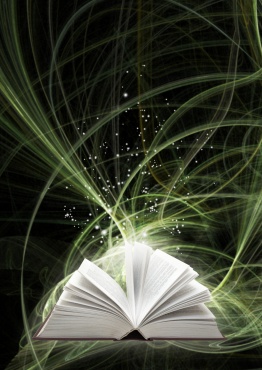 I have been woefully remiss in posting here. It’s probably not much of a surprise to many of you, but I have so many projects going on I tend to get overcommitted. In fact, I’m starting to call 2015 the year of digging out of my overcommitments and making my life more organized and sustainable.
I have been woefully remiss in posting here. It’s probably not much of a surprise to many of you, but I have so many projects going on I tend to get overcommitted. In fact, I’m starting to call 2015 the year of digging out of my overcommitments and making my life more organized and sustainable.
While I haven’t been posting here, I have been doing a lot of writing. I thought I’d do a quick sum-up of some of the articles I’ve written that are available online, and a few other projects I’ve been up to and ways to keep posted on things I’ve written.
One of my personal/spiritual goals is to bring more joy into my life, so to get there, I first have to clean up my email inbox, finish up a lot of my “to do” list that is overdue, and feel like I’m at least somewhat caught up on the various active projects I have going on. I’ll likely be posting more about this process as I go along. I’m not currently at any risk of feeling caught up–however, I can see the light at the end of the tunnel. I’ve had a number of books that I’ve been laboring on, and if all goes well, a bunch of them will be coming out over the summer and fall.
That being said, I’m still blogging and writing articles, just not always here. I thought I’d post some places you can find more of my writing.
Articles Archive
I’m trying to keep a fairly updated listing of all my published articles over on my main website. While many of these articles aren’t online, some are. Of course, it also seems to be the nature of the internet that as soon as I put up links to my articles, those websites change their site structure. https://shaunaauraknight.com/books/articles/
Blogging
I am now blogging for a number of different sites:
Seeking the Grail (on the Patheos Pagan Agora blog)
Pagan Leadership (on the Witches & Pagans PaganSquare)
I’ve been a regular blogger on Pagan Activist though I’ll be blogging less frequently there just for sanity purposes. Don’t worry, I’ll still be crawling up on my soapbox when needed.
I’m also a fiction writer, and if you’re interested in my paranormal romance, urban fantasy, and epic fantasy fiction, you can check out my work at: http://shaunaknightauthorartist.wordpress.com
FB Groups and Webinars
I’ve started up several Facebook Groups over the past years, and these are a great resource for education on specific topics. If you’re on Facebook, I post articles and conversations on these groups. I’m also going to start hosting some webinars on Pagan leadership and ritual facilitation. While you don’t need to be on the FB groups to participate in those, I’m going to use the FB groups as a way to discuss the topics presented in the webinars. Kinda like…homework. Sorta.
Pagan Writers – If you’re a Pagan author (fiction or nonfiction) and looking for resources on writing, publishing, promoting, or looking for a place to post calls for submissions, this is a resource for that.
Current Blog Posts
Here are my current blog posts on the Witches and Pagans PaganSquare. You can subscribe to my blog there via email or RSS feed there via a link/button on this page. The blog title is Pagan Leadership: Community Building, Facilitation, and Personal Growth
Paganism and Problem Solving
Being a Pagan leader means dealing with problems. The challenge being, talking about problems are a bummer. Worse, many people join together in a group but have never discussed what the intention of the group is. Is it a small private coven/circle? Or is it a group formed to plan public Pagan rituals? This article addresses some of the issues around expectations and communication that can cause group conflicts before a group even has a chance at succeeding.
Identity and Leadership Failure
One of the core challenges in Pagan leadership is connected to our very self identity. Ego, egotism, arrogance, and shadow all keep us engaging in the same patterns that destroy groups, even unintentionally. Looking in the mirror is hard but crucial work.
Effective Feedback: Giving and Receiving — Part 1 and Part 2
Whether or not you want it, if you’re a leader, you’re going to get positive and negative feedback. First, leaders need to learn how to deal with feedback, their emotions around it, and discern whether or not the feedback is useful. That’s a skillset right there. Also, leaders need to learn how to offer better feedback, and how to solicit feedback that is constructive and useful.
Patheos Pagan: Seeking the Grail
Seeking the Grail: Why Begin the Quest?

An introduction to Seeking the Grail, a column about spiritual seeking, personal transformation, leadership, and mysticism. What is the Quest for the Grail? How does the journey shape your heart? What calls your soul on this path?
Seeking the Grail: The Waters of Spring
 Ostara hasn’t ever been one of my favorite holidays, and yet I can’t ignore how the first breath of springtime air makes me feel. The rush of spring reminds me of my own Grail Quest to recover my creativity and inspiration after a major depression. What invigorates you? How can you invite in that breath of spring?
Ostara hasn’t ever been one of my favorite holidays, and yet I can’t ignore how the first breath of springtime air makes me feel. The rush of spring reminds me of my own Grail Quest to recover my creativity and inspiration after a major depression. What invigorates you? How can you invite in that breath of spring?
Seeking the Grail: Into the Deep Within
 I sometimes wonder why I bother leading rituals. Why does religion matter? And then, in ritual, I hear the sound of two hundred people singing a chant together in harmony…feet pounding the ground as we dance. People laughing, weeping. People telling me that the ritual shifted something within them, that they felt the divine, that they spoke to an ancestor, that they released an old pain. That it made their lives better.
I sometimes wonder why I bother leading rituals. Why does religion matter? And then, in ritual, I hear the sound of two hundred people singing a chant together in harmony…feet pounding the ground as we dance. People laughing, weeping. People telling me that the ritual shifted something within them, that they felt the divine, that they spoke to an ancestor, that they released an old pain. That it made their lives better.
Mysteries of the Grail: Seeker, Shaman, and Sovereign – Part 1
 The quest for the Grail is the process of moving from the knight, or seeker, into the initiate of the mysteries. But initiation is not enough; to become sovereign, we must take what we’ve learned back out to heal the Wasteland, heal not just our selves but our communities, our land, our world. Very often, the quest for the Grail is catalyzed by difficulties and challenges in our own lives.
The quest for the Grail is the process of moving from the knight, or seeker, into the initiate of the mysteries. But initiation is not enough; to become sovereign, we must take what we’ve learned back out to heal the Wasteland, heal not just our selves but our communities, our land, our world. Very often, the quest for the Grail is catalyzed by difficulties and challenges in our own lives.
Subscribe to my Email Newsletters
I’ll be posting more to these in the future, but I won’t flood your inbox. I’ll post everything from links to articles (like I’ve done here), new book announcements, and the occasional freebie. Subscribers to my fiction newsletter currently have access to one of my novellas for free, and soon I’ll be making a free ebook available to my nonfiction/Pagan email list as well. There are also likely to be the occasional contest and giveaway.
Nonfiction/Metaphysical/Transformative Arts
 Current and Upcoming Books
Current and Upcoming Books
I can’t believe it’s been over a year since I released The Leader Within and Ritual Facilitation. You can still buy those as ebooks, or print books, and that info is available on my website. I’m currently working on a followup book to my Dreamwork for the Initiate’s Path. It’s called Dreamwork: Underworld Journeys. I hope to have it finished and published within the next months. I’m also working on an expanded edition of my ebook Spiritual Scents, which focuses on the use of scent (or avoiding scent) in ritual. I have a few other nonfiction books I’m working on including Finding Your Personal Magic. I’m also working on some longer, more step-by-step books on ritual facilitation, Pagan leadership, and on general public speaking and facilitation.
Taylor Ellwood and I are finishing up edits on the Pagan leadership anthology, and we’ll be announcing a release date for that soon, probably this fall.
For those interested in my fiction projects, I’ve been mostly focusing on paranormal romance, though I have one urban fantasy story published and more on the way, and some epic fantasy in the works. My most recent release, A Fading Amaranth, is a vampire romance that also hints at my upcoming urban fantasy series. My upcoming release, The Truth Upon Her Lips, features a wereleopard, a Faerie lord, and a woman who has truthspeaker magic that weaves in some “real” magic. Or at least, magic as I see it. Though I do use some of the “whiz bang fireworks” magic popular in fantasy books, I like to weave in some actual magical and spiritual theory int my fiction stories.
Filed under: Leadership, Pagan Community
Ritual Facilitation: Designing Processes
 The most current issue of Circle Magazine is themed entirely on rituals. It’s a great read with lots of tips and tools for ritual facilitators. My own article, Ritual Facilitation: Designing Impactful Rituals, ended up being way too long for the magazine, and so I pulled out a section of it and just created an entire article from that piece. Thus, this article will perhaps have more context if you read the article in the magazine. Below I focus on the specifics of designing processes and how this connects to the design of ritual.
The most current issue of Circle Magazine is themed entirely on rituals. It’s a great read with lots of tips and tools for ritual facilitators. My own article, Ritual Facilitation: Designing Impactful Rituals, ended up being way too long for the magazine, and so I pulled out a section of it and just created an entire article from that piece. Thus, this article will perhaps have more context if you read the article in the magazine. Below I focus on the specifics of designing processes and how this connects to the design of ritual.
In many of my articles on ritual facilitation I talk about designing rituals rather than writing them; design means to plan. I also talk a lot about the flow of rituals and how each piece of a ritual layers and prepares people for the next piece. What might surprise you is that some of my own background as a web designer and usability consultant impacts how I approach designing rituals.
Process and Space Design
Let’s assume you’ve got a ritual planned, but you are looking at a few complicated logistics. Or, let’s say you’re taking a big step back from how you usually do rituals and rethinking things to try and make your rituals more accessible, more impactful, or just more effective.
There are some secular processes that can help to give you some good examples of understanding how process, flow, and the space where the ritual takes place, all impact each participant’s experience of the ritual. While you might not think that these secular processes have much to do with ritual, it’s important to remember that processes are pretty universal. We humans are going to engage in processes in similar ways whether they are religious are secular. And if you understand processes of any kind, you’ll be a better ritual designer.
This might seem a bit nerdy, but trust me–this will help you design better rituals.
Going To the Store
Think about the last time you went to a larger store like a grocery store or department store. In many stores there is an open space near the entrance. Store designers often refer to this as a “landing zone.” What designers and anthropologists have found in observing people in stores is that people often like to stop and orient themselves when entering a large store. Stores that are too crowded in the entrance way make this difficult, and people feel uncomfortable, even though they can’t necessarily articulate why.
Similarly, stores that try to pack the aisles in too tight also make people feel vaguely uncomfortable. Stores that have plenty of space between aisles make people feel more comfortable. Often store owners will try to cram as many products into the space as they can, but the truth is that when people feel more comfortable, they stay longer and buy more.
I can think of one store where the underwear and sock aisles are all packed so close together that I can barely walk through them. I hate shopping there; that vague sense of discomfort is enough to make me avoid shopping at that store, even if they have good sales on products I need.
While rituals don’t have aisles packed with products for sale, what’s important is to note that the design of the space, the shape of the room, whether or not there are enough chairs, or other aspects of the design of the process of the ritual itself can make people uncomfortable. It’s not about dealing with difficult subject matter, it’s a matter of logistics. Can people sit if they need to? Are there enough chairs? Is the room cramped?
I often shop at thrift stores, but one of the significant challenges that I face is the perfumey smell of the store. All the clothes in the store seem doused in perfume and cologne, which makes my face itch. I’m pretty sensitive to scent. Thrift stores are the only place I can buy frames for my artwork, so I suffer through it, but it’s another example of how something uncomfortable can totally transform someone’s experience.
Do your rituals use a lot of scent? Are you burning sage or other things that people might be allergic to?
In essence, what we’re looking at here are the things that make people uncomfortable. Observing people and how people behave can give you a lot of clues. What is particularly useful in observing processes is finding out key points of pain and irritation. If people aren’t comfortable, they won’t shop at your store, or attend your rituals.
Discomfort and Challenge
I should note that there’s a difference between designing a ritual where you ask uncomfortable questions–such as shadow work–and a ritual where people are uncomfortable because they are standing around bored for a half hour or more in the cold waiting for their turn at an altar. Or a ritual where people are stumbling around in the darkness trying to find their way to the ritual area. Or one of my personal pet peeves, trying to find my way to a ritual or festival at a park shelter when there were vague directions posted, and there is no signage.
In essence, if you want to take people into a deep, spiritual place, you have to know how people work.
Nobody’s going to be relaxed enough to go into a trance state, or trust you to take them on an Underworld journey, if they got lost trying to find your event, if there wasn’t appropriate signage, if the event space is uncomfortable, or if the design of the ritual itself leads to a lot of boring standing around.
Expectations in Process
Why, after all these years, do I still use the Four Elements in rituals I facilitate? Even though I’m a pantheist and I don’t believe in them as actual spirits? Why do I do something that looks like a circle casting, even though I don’t think of it as a magical barrier? Basically, because most Pagans are familiar with Wiccanate (Wicca-like) traditions and expect it.
Now—I’m not saying this is always the way to go, and I may at some point be changing some of my own ritual approach to less resemble Wicca. But it’s part of why I’ve stuck with the common ritual progression of grounding, circle casting, elements, deities, and storytelling/trancework/working.
Because it’s familiar. Familiarity is comforting, and it’s an important part of designing processes.
I’d say a lot of ritual design is balancing the repetition of tradition, which makes people feel comfortable and safe, and adapting or redesigning a tradition when a change would serve the group better.
Think about some of these secular processes you may have engaged in.
- Pumping the gas at a gas station
- Calling someone on the phone
- Ordering a book online
- Reading a book
You probably don’t think much about these processes. You’re on autopilot. Why? They are systems that you understand. They are habitual, you don’t need to think about them. And yet, any one of these processes was once new. And these processes change.
Once upon a time, you pumped your gas and then paid for it at the store. These days, most gas stations require prepay. This disrupted the system and people had to get used to the change, but now it’s become rote. This is an example of changing a part of the process, but in a way that integrated with the existing process.
Tip: If you’re changing a process in your rituals, make it as seamless as possible and give people a reason to do it so they don’t get irked. People paying for gas at the pump save time by not having to stand in line at the register. Though people are often made uncomfortable when a process changes, and even resist it, if the new process is more efficient, people will be more willing to adopt it. An example might be changing how you smudge people, or changing how you facilitate Cakes and Ale, to make it go more smoothly and not take 45 minutes.
Calling someone on the phone was once a new thing. Then people understood it and became comfortable with it. Now, more and more people would rather text someone than call them. On the other hand, online systems like Google Phone and Skype are best served when they emulate the phone model, even though they don’t need to. Why? Because people are comfortable with the phone and know how it works.
Tip: If you’re designing a new process in your rituals, make it resemble an old process that people are already comfortable with. An example is if people are in line for some aspect of a ritual, and you want more than one person at a time to come up to an altar or a shrine, you can still have people line up; that’s easy, people automatically do that. You’ll just have to overtly invite three or four people to come forward at a time. People will catch on.
Ordering a book online is something you couldn’t do before the internet. Designers (like me) spent agonizing hours trying to design shopping processes (and other online applications) that were easy to use. Many of the early web sites had staggering percentages of people who “bailed” from the purchase process because the process was too difficult to complete. There were a lot of problems, but one consistent problem with any interface (software, website, airport signage) is the failure to communicate to the end user what they are supposed to do to successfully complete the task.
There are still websites that fail to design an interface that is easy to navigate for their users, but the sites that do it well employ a technique called the shopping cart tunnel. That is, the online shopping cart has as few distractions as possible and makes it very clear what the next steps are. If those steps are unclear, or typing in your payment information is frustrating, you’ll bail from the process.
You can see similar frustration if you’re at an airport or bus station and the signage is poor. Walking back and forth with heavy luggage when you aren’t sure where to go is very frustrating, and could be solved with better signage. In essence, better communication.
Tip: If there’s anything about your process that is unclear or confusing, it’s going to frustrate your attendees. Look at your rituals with a critical eye, and watch people. Are there parts of your ritual where people are bored, frustrated, or confused? I’ve been to many rituals where the ritual leaders clearly expected the participants to do something, but never told the participants what they wanted them to do or how to do it. Or, there was too much going on and the participants were confused? Look for these parts of your process; if you’ve ever had a ritual train wreck where the ritual went way off plan and people seemed confused, you need to improve your communication and setup of how the participants can successfully complete that part of the process.
An example is a ritual where cups were passed out and filled with water; people weren’t sure whether they were supposed to drink it right then, or wait for everyone, or do something else. They weren’t told. Another example is a very performance-heavy ritual was led by someone who began singing. The ritual leader got frustrated when people didn’t join in singing the chant/song, but she hadn’t asked them to. Another example was when a ritual team started dancing in the center of the circle of participants, and participants looked at each other wondering if they were supposed to dance too or if they were supposed to watch. They had not been overtly invited to dance, so they were kind of waiting and watching, unsure if they should join in.
People’s desire to not look stupid in front of others is a driving motivation you can count on every time. Ritual processes, therefore, should clearly communicate what people are being asked to do so that the attendees don’t need to wonder, and work to make any participation safe to join into.
Reading a book is a fairly intuitive process. Pick up the book, open it, read the page, turn the page. You observe people doing this at a pretty young age so we don’t even really have to be taught how to do this. Now we have ebooks, which were considered a disruptive technology. This means a technology that it disrupts the way things were done before. Many folks are resistant to the idea of ebooks because they find technology confusing, or because they like how “real” books feel.
One way that designers have overcome some of the resistance to ebooks is by designing them to—as much as possible—resemble physical books. Most tablet ereaders are book-size and book-shaped. They have functionality so that you can flip the page in a similar way to how you would with a physical book. They work to make the new technology as easy to use as the physical book, and that’s one reason why so many have adopted reading ebooks.
Tip: Try to make your ritual processes be so intuitive that participants don’t need to think about what to do. I once was part of a ritual exercise where people were supposed to walk the path of a large pentacle painted on a dropcloth on the floor. They were supposed to remember the names of the five pentacle points and walk them in order, but the concept had been really quickly introduced and the attendees were having trouble remembering the points. So, instead what one facilitator did was get the whole group of people chanting the five points one after each other. It was themed after the Iron Pentacle, so the points were Sex, Pride, Self, Power, Passion.
The other facilitator was visibly frustrated that people weren’t calling out the points in the “right” order and the exercise wasn’t going the way they had originally envisioned, but the setup was poor and people were initially incredibly confused.
Nobody is going to get much out of your ritual if they are unsure of what to do and are confused and frustrated. The adapted process leaned on things that people knew how to do–participants were ready and willing to chant along with the facilitator, and once people walking the pentacle knew what point they were on (because the group was chanting it) they felt better about the exercise.
If you have a complicated exercise or logistic that’s part of your ritual, you must clearly communicate what needs to happen (and ensure everyone’s got it) before the ritual starts. In fact, you should probably practice it. You should also have a backup plan for how to make the exercise simpler if people aren’t doing it the way you envisioned during the ritual.
Bottlenecks
Some aspects of human behavior just naturally cause bottlenecks or long, and I’d say that bottlenecks are perhaps one of the biggest challenges. Here are some examples:
Everyone is sitting together in a circle. A ritualist asks for each people to pass a stone from one person to the next, and when they are the one holding the stone, to speak about their experiences in the trance. No time limit is given or suggested, and the first person to speak talks for two minutes. The entire ritual lasts more than three hours, long past when people expected to be able to go home, but people stay because it would be rude to leave.
During a ritual each person is invited to visit one of three altars/shrines. The first person to go to the shrine takes about a minute, and people line up behind her. People politely wait their turns but this stretches into being in line for an hour. There’s an axiom that the first person to do the thing sets the tone, and they also set the expected time limit. If your first person to smudge themselves, to go to a deity at an altar, to speak an intention, or any other activity…if they take a long time, each person after them will take about that long. Stack the deck by ensuring the first person does the logistic quickly. Stack the deck further by suggesting that each person should speak just a few words or a sentence, or state about how long each person has to talk/experience in order to ensure each person there has enough time.
During a ritual, people are asked to pass through a birthing/creation gate where the Crones of the community greet them. The Crones begin to hug each person who comes through the gate. Then each Crone hugs each person through the gate. There are 200 people in line at the gate, and what was intended to be a quick influx of several hundred people through a gate where the Crones waved at them and wished them well becomes a receiving line that lasted thirty minutes. I asked one of my ritualist team members to ask the Crones to stop hugging each person, and the Crones flatly refused to stop. Another axiom of processes is that once a process gets going, it’s ludicrously difficult to stop it.
During a ritual, people are asked to cut strands of yarn on a scythe. The strands are red and symbolize something they wish to sever from their lives, something they wish to release. Unfortunately, most people don’t know intuitively which end of a scythe is sharp. (Hint: It’s the bottom/inside, not the top.) So the shrouded figure of Death holding the scythe, instead of being an imposing, silent presence, has to show people how to cut their strand.
Observing Processes
One of the very best things you can do as a ritualist is observe processes. Observe secular processes and what makes people frustrated…but also observe your own rituals, or the rituals of others, and look for the points of pain.
What frustrates people? Getting lost, poor customer service, uncomfortable chairs or the lack of enough chairs, rooms that are too hot or too cold, lines that are too long. I know I get frustrated when I’m given options that don’t make any sense, like when I’m doing my taxes. And then I think about rituals I’ve been to where I was equally unclear what I was supposed to be doing.
Once you begin to get a stronger sense of what is frustrating for people, you can begin to design and adapt processes in your rituals that work better for people. Always go with the flow when you can; people have natural patterns they will follow. If you know what those patterns are, you can predict what people in your ritual will do.
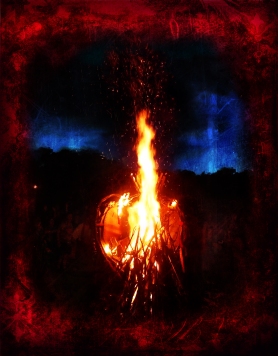 An example: At the recent Paganicon I led the main ritual. There were 150-200 people in a large ballroom, and there were five altars/shrines. People could journey to any one of the five separate altars/shrines to do a specific working in the Underworld. I knew from experience that there was one altar that was likely to be the most popular, and thus, a bottleneck.
An example: At the recent Paganicon I led the main ritual. There were 150-200 people in a large ballroom, and there were five altars/shrines. People could journey to any one of the five separate altars/shrines to do a specific working in the Underworld. I knew from experience that there was one altar that was likely to be the most popular, and thus, a bottleneck.
I just didn’t know which altar it would be.
It turned out to be the altar where people were cutting away the thread of what no longer served. I only had one sharp knife to use, and people were taking a long time to choose their strand, to step forward, to consider their strand and what it meant, and then cut it, and let it fall away.
When I noticed that everyone else was done at the altars and the Cutting Away altar had about twenty people left in line, I was able to quickly expedite the process. I asked one of the altar facilitators to take the bowl of red ribbons down the line and get everyone to choose their red ribbon and charge it up. Then, I took up the knife myself, and walked to each person in turn. I looked into their eyes and said, “What do you cut away? What no longer serves you?”
I was able to, in the span of about a minute, help everyone cut their ribbon. If I’d just let it go on as it was, it would have taken another 10 minutes.
After, people still took time at the altar to consider what they were cutting away, but I was able to begin to transition the rest of the group into the next phase of the ritual. The process of the line was predictable, and if you as a facilitator know that a bottleneck like that can happen, you can expedite the process. In fact, you can do it far more subtly than I did it if you do it early on. If I had established up front that one facilitator at the altar would pass out the red ribbons, and one facilitator would cut the threads, the line wouldn’t have gotten that long in the first place, and that’s definitely how I’ll be facilitating it in the future. Better yet, have two or more knives, so long as I have enough trusted facilitators to keep track of the sharp objects.
Observe your rituals and what works and what doesn’t work, observe the processes that aren’t succeeding, and you can begin to work to shift them. I have been leading public rituals for years and I still learn a lot by observing ritual processes and what works and doesn’t work.
Filed under: Facilitation, Pagan Community, Ritual Tagged: Pagan, Pagan community, paganicon, ritual, ritual facilitation
Paganicon Schedule
Well, the lovely folks at Paganicon sure are going to keep me busy! I’ll be leading the main ritual on Friday night as well as showing art in the art show, facilitating three workshops, and sitting on three panels. Plus a book signing. I did tell them to feel free to keep me busy…
Here’s my schedule, for those who are interested. I’m making a note of several workshops I’d *love* to attend if I weren’t teaching at the same time. Oh, for a Timeturner.
Full Schedule: https://paganicon2015a.sched.org/
Learn more or register: http://www.paganicon.org/
Friday, March 13
Afternoon: Art show setup & ritual setup
5:00 PM Speed Friending
7:00 PM Opening Ceremony
7:30 PM Ritual: Return to the Root (Facilitating)
9:30 PM Panel: How Black Lives Matter Can Inform our Spiritual Practices (Panelist)
Saturday, March 14
9:00 AM Primal Mysteries — Donald Engstrom-Reese
10:30 AM Raising the Sacred Fire: Raising Energy in Ritual (Facilitating Workshop)
(though I’d also like to attend Paganism and Mental Health: Healthy Magic, and The Need for Ordained Clergy in the Pagan Community in 2015)
1:00 PM Sex, Ethics, and Power: Problems and Solutions (Panelist)
3:00 PM Book Signing
(I’d love to attend Beginning to Find Your Voice)
4:15 Cultural Honoring or Appropriation (Panelist)
That evening is the Equinox Ball, though I imagine I’ll spend most of the evening looking for people to talk with on ritual, leadership, and other “shop talk.”
Sunday, March 15
11:15 AM Keepers of the Flame: Pagan Leadership and Community Building (Facilitating Workshop)
12:30 PM Enchantment, Charisma, and Facilitation: Leading Workshops, Rituals & More (Facilitating Workshop)
2:15 PM Crafting and Guiding a Positive Volunteer Dynamic – Blodie
Filed under: Leadership, Pagan Community
Warding and Safety in Ritual: Video
At Pantheacon, I was invited to be part of a panel on warding and ritual safety. I blogged about my thoughts on the topic, but here’s the video of the panel discussion at Pantheacon. It includes everything except the Q&A at the end. So…feel free to ask questions here if you like :)
Filed under: Ritual Tagged: facilitation, Pagan, Paganism, pantheacon, ritual, ritualist, safety, warding
Ritual Technique: Trance, Chant, and Cantillation
 I’ve been on the road for about two weeks, and I have about a dozen blog post ideas swirling in my brain, but I thought I’d ease in with a ritual technique, since this is something I use frequently when I teach and lead rituals and lots of people ask me about it. My pet name for the technique is the Trance Hammer, since I came up with it during a Brigid-themed event.
I’ve been on the road for about two weeks, and I have about a dozen blog post ideas swirling in my brain, but I thought I’d ease in with a ritual technique, since this is something I use frequently when I teach and lead rituals and lots of people ask me about it. My pet name for the technique is the Trance Hammer, since I came up with it during a Brigid-themed event.
First, a bit of background. The word “Trance” in ritual is often used to mean different things. In Reclaiming (and related) rituals, “the trance” is what people call the guided meditation part of the ritual, usually in the middle of the rite. The word meditation isn’t used because Reclaiming, Diana’s Grove, and some other traditions use what’s called dual voice trance. I’ve also heard it called open language trance. The difference is primarily this:
- A guided meditation tells you what you are thinking, seeing, and feeling
- Open language trance asks you what you are thinking, seeing, feeling, experiencing, hearing, smelling, etc.
Also:
- A guided meditation is usually one voice reciting a script
- Dual voice trance often uses one or more voices layered over one another, plus rhythmic assistance like frame drumming, singing bowls, didgeridoo, etc.
Trance and Meditation
The word trance, and meditation, are both problematic when we are talking about ritual technique because of varying connotations and meanings. That’s why I typically use the word “trance” to refer specifically to “the trance state,” which is a state of consciousness, and I use the words “trance journey” to refer to a dual voice, open language trance. Trance journey/guided meditation fulfill the same function in a ritual insofar as giving someone a guided inner experience.
A trance journey sits between a shamanic journey and a meditation; some vocal guidance is offered, but the journey asks questions to help someone create their own experience vs. telling them what everything looks like and how they should feel about that. A shamanic journey typically is just drumming with no vocal guidance.
Meditation and trance are often used interchangeably as well. People refer to “meditating” when what they mean is “achieving the trance state.” I won’t get too much into the nerdery, but getting “into trance” usually means moving your brain from Beta waves (consciousness) to Alpha waves (daydream) and then Theta waves (deeper trance state).
The word meditation, used on its own, often has the connotation of stillness meditation, za zen, empty mind. A lot of people tell me, “I can’t meditate,” because they experience the hamsterwheeling/chattering brain. Here’s a secret: So do a lot of experienced meditators! However, there are a lot of different ways to meditate, including walking, art-making, singing. Rhythmic activities work well. What works for your teacher won’t always work for you. If you are really bouncy and leg jiggly, stillness meditation isn’t going to work so well, but dancing might.
Engaging the Trance State
Let’s get back to trance journeys and the trance state. There are many different ways to get into a trance state; stillness works for some, singing for others, moving, dancing, weaving, jewelry making, staring at a candle flame…lots of roads there. But overall, there are two paths to a trance state; ergotropic and trophotropic. Which are nerdy neuroscience terms for trance through sensory deprivation, and trance through over stimulation.
In my experience, most Americans tend to respond better to an over stimulation trance. Hence, my Trance Hammer technique.
I came up with this technique when I was asked to offer something during a book launch event at Life Force Arts Center. While I wasn’t one of the authors in the Brigit: Sun of Womanhood anthology, I was local to Chicago and Joan Forest Mage asked if I’d be interested in offering something to help round out their book launch’s program of presentations. I offered to read a devotional poem to Brigid, but I also offered to get people chanting and build up a little energy.
Brigid does like the creative fire of voices singing together!
However, I faced a challenge. I design rituals to engage people in a trance state right from the beginning, deepening it with every layer. With the book launch, there was going to be almost two hours of programming that wasn’t necessarily engaging the trance state. I was at the very end and by then, a lot of people would tired of sitting, some might possibly even be a little bored, and certainly the group wouldn’t not ready to engage with singing and raising energy.
It takes a lot of work to get a group to feel comfortable participating.
Dual Voice Without a Partner
I had come up with a modified way of offering dual-voiced trance for when I travel and teach. See, the dual voice technique works best when you have at least one skilled trance partner. You learn each other’s rhythms and you get used to speaking over one another. That’s crucial for that trance technique, that two voices are speaking at the same time. Or more voices; a dual voice trance could have three or five or six or however many voices are needed. For a ritual of 500 people you’ll want at least five voices, perhaps more.
Not having a trance partner when I travel and offer workshops, or when I lead rituals at festivals, I had to adapt. I borrowed from a teaching exercise that I first learned in Reclaiming classes where four people would be asked to stand back-to-back in the center of the circle. They were each asked to choose an element, to close their eyes, and begin to rhythmically speak wisdom from that element. This is a great intro to trance technique, and it’s low-risk for people who are afraid of public speaking because 1. there are multiple voices, and 2. you can close your eyes.
In fact, I recommend this exercise on its own for shy, emerging public speakers looking to take on ritual roles.
So what I had been doing when I traveled is getting three or four volunteers to stand back to back and do this. Sometimes I had them speak the wisdom of the elements, sometimes I’d pick a few rhythmic words based upon the theme of the ritual, sometimes I’d give them a theme to work with that wasn’t elemental. I might have one person do the common Tree of Life meditation (roots down into the earth, branches up to the sky) while another one spoke of Lammas and harvest, and yet another spoke of sacrifice, of what we let go of.
While those four in the center are speaking all at once, I would lead the “plot arc” of the trance journey. I’d tell the story and lead people to the place where we did the thing, whatever that thing was in that particular ritual. It didn’t really matter if people can’t hear all the voices, or if the voices aren’t speaking the exact “right” words. What the multiple voices are doing is engaging the deep subconscious.
Trance Hammer
For that first Trance Hammer, I enlisted four volunteers. Each one would speak to one of Brigid’s triple fires, and one to her sacred well. I gave them a few starter words and had them stand in the center. I had the lights dimmed, and I invited everyone to stand up in a circular shape around the four in the center, and I got them to sing a tone/rolling OM while the four in the center were speaking.
I then sang my Brigid poem in cantillation style over all of that.
Cantillation is basically the technique you hear in Catholic mass or Eastern Orthodox where the priest is sing-songing the liturgy. Or even more potent, the priest sings a phrase and a choir sings it back to them. It’s usually singing the words of a liturgy in a rhythmic way and with just two or three notes; this doesn’t require a complex melody that you have to memorize.
In this case, singing the poem took me maybe three minutes, but that’s all it took to get everyone into a light trance state. As someone told me later, “I was trying to listen to the four in the center, and I was trying to listen to what you were singing, but I was trying to keep singing the tone, and I went to this far out place.”
When I was finished singing the poem, I allowed my voice to fall to silence, and then I brought the four in the center to silence, and then the tone fell away. In that moment, I asked everyone to take a breath, I spoke a few words to give them a chance to catch their breath, and then I asked everyone to join me in a chant to connect to the energies of Brigid, whether they thought of her as a Goddess, a saint, or just a story.
Everyone joined willingly into that chant in a way they wouldn’t have if the lights had been bright and they’d just been sitting there listening to readings for two hours. Even really engaging readings will still put a group into passive/audience mode, vs. active/participant mode, so I had to help them switch gears.
Using This in Ritual
I now use this technique all the time in ritual. Typically I do it as the Center/World Tree invocation after people call the elements. It makes a perfect transition into the trance journey portion of the ritual.
This technique works through overstimulation. What you need to pull it off are:
- Four people willing to stand in the center and speak loud enough to be heard over the toning
- One or two people to anchor the toning
- At least 10 people (15-20 is better) in the remaining group to keep the tone rolling
- One strong singer with a voice strong enough to sing over what everyone else is doing
There are, of course, ways to modify the technique depending on what your group has. Things to note that have surprised me when I’ve facilitated this: If your group has a lot of smokers, you’ll need more people to anchor the rolling tone. I did this technique in a class of about fifteen people, many who were heavy smokers, and they had a hard time keeping the tone going. Yet, you also need to ensure that the tone isn’t at such a loud volume that you can’t sing over it or hear the four voices in the center.
Also, you’ll need to work with the people in the center so that they know what an appropriate volume is; sometimes they will speak in such a soft whisper nobody can hear them, which defeats the purpose of the technique.
I realize that writing about this technique without the ability to demonstrate it might make this seem a little tricky, however, if you have a group of at least 15-20, you can try it out as a practice session and see how it goes. If you have a group of 10, you can try it with two doing the back-to-back in the center. That leaves 7 to hold the tone, and one to sing over it.
You can also do the basics of this technique with only 2 of the three parts. You can have the whole group toning (or adding harmony to the tone) while one person sings a poem/piece of liturgy/song over that, or you can have the four people in the center speaking while one person speaks (vs. sings) the trance journey.
Pro tip: This works better indoors or in a place with good acoustics. Outside with no tree cover, the sound will disappear fast. This also works well when you have dimmed lighting and a (smokeless) fire in the center to draw people’s gaze. Fire adds an additional layer to the trance and the over stimulation since it’s adding visual and kinesthetic layers.
Comments? Questions? Let me know if you’re interested in trying this out, or if you’ve tried it out and need help with fine tuning.
Filed under: Facilitation, Ritual Tagged: meditation, Pagan, Pagan community, ritual, ritual technique, trance, trance journey
Twelve Healing Stars: Dissolving humanity’s spiritual walls in Pisces
I love this article and Tim brings in the common social psych behaviors and how these impact groups. Lots of food for thought.
Originally posted on Intersections:
Twelve Healing Stars is a yearlong project in cooperation with the Temple of Witchcraft that explores social justice through the lessons of the 12 Zodiac Signs. This is part six.
Basic social psychology suggests that religion can be a very dangerous thing. Open any introductory textbook to the chapter on social psych, and you’ll be hit with a flurry of concepts that build upon each other to show us how tribal, exclusionary, and potentially violent religion – any religion – can become.
- The Out Group Homogeneity Effect tells of our tendency to see all people that are not part of our group as “all the same.”
- In Group Bias is our ability to tolerate differences within our own groups, even as we don’t see them in other groups.
- The Fundamental Attribution Error leads us to blame another person’s character for mistakes they make and any behavior they do while ignoring…
View original 1,064 more words
Filed under: Uncategorized
Raising the Sacred Fire: How to Build and Move Energy in Ritual
 As I’ll be teaching a number of workshops on ritual facilitation at Pantheacon, ConVocation, and Paganicon, I thought I’d offer up one of my articles on leading rituals that is included in my book, Ritual Facilitation.
As I’ll be teaching a number of workshops on ritual facilitation at Pantheacon, ConVocation, and Paganicon, I thought I’d offer up one of my articles on leading rituals that is included in my book, Ritual Facilitation.
I’ve also created a Facebook group with the intention of discussing and teaching techniques for leading more potent rituals. Feel free to join up if you like!
Raising the Sacred Fire: How to Build and Move Energy in Ritual
Together we are singing, moving, dancing, chanting, and drumming around the fire in the center of the circle. The energy builds and slows then rises up again. I move the drum beat, and the drum beat moves me. We draw closer; I look into the firelit eyes of people around me and we smile as we sing. We drop the chant down to a whisper, then bring it back up again. Our song is a prayer for transformation, a prayer for our individual gifts to be transformed on Brigid’s Forge into their highest potential. I am singing for my gift, and for the gifts of everyone there. Our prayer is singing, movement, rhythm, and our shared intention. The chant moves into a tone that rises and falls like a fire at the bellows until we hold the silence together.
Have you ever worked to build ecstatic energy in rituals?
Raising energy in ritual can be a difficult function to facilitate. Many ritualists get a chant going only to find the group stops singing it as soon as that ritualist pauses to take a breath. Despite the challenges, there are some skills, tools, and processes that you can use to help build potent, transformative energy in rituals.
Facilitating ecstatic energy is the ability to sense energy and the ability to understand the logical energetic flow of any event. Having talent as a singer, drummer, musician, or dancer can help; it’s perhaps more important to have a team of people that is engaged, excited, and willing to model the energy as an example. Excitement is contagious, and if you are invested in the energy, then your participants will be more willing to buy into it and commit their energy as well.
What is energy?
While some ritualists may be gifted with the ability to see auras and energy, I’m not among them. I sense energy more kinesthetically, and I also work with energy less as a metaphysical thing, and more as the life-force cycled from our bodies. Breathing in oxygen, there’s a chemical reaction and we exhale carbon dioxide; chemical reactions release energy. I can also see energy through the physical reality of body language. So sensing energy is largely becoming observant.
Think about the last meeting or class you were at. How were people sitting? Did people look interested or bored and tired? How about the teacher or facilitator, did their voice drone on, or were they excited? Now think about a concert or sports event. How did you know if people were excited? Were people standing up and cheering or dancing? When people applauded, what did you feel inside?
Notice the environment around you and how you can sense the energy level of the group. Energy comes across in our body language, movements, actions, how we are talking, and the look in our eyes. If I’m talking to someone and they’re not looking at me, I don’t feel like they’re really interested in me. But if I go to a friend with a problem and they’re looking deeply into my eyes, I feel like they are really present and connected to me.
Ways to add energy
Here are some ways to add my energy in ritual, broken down by element.
Earth—Body, movement, dancing. Whether I’m a great dancer, or just adding my energy by swaying back and forth to the rhythm of the chant, I’m adding the energy of my body. When I move, my blood moves faster. Calories are consumed, and energy results in my body radiating heat and the energy of my physical life force.
Air—Breath, speech, chanting, singing. In ritual, I add Air when I participate by speaking aloud an intention or wish, when I lend my voice to the chant. When we sing together, we are breathing together, harmonizing our breaths and our pulses. We don’t need to be good singers to still make a sound and add the energy of our voice.
Fire—Rhythm, percussion, drumming. Drummers can add some of the intense sound and rhythm to the ritual. I can also add rhythm by clapping, stamping, snapping my fingers, or through vocal percussion and making rhythmic sounds with my mouth.
Water—Connection, intention, emotion. I can connect to the intention of the ritual within the depth of my heart, and to others in the ritual through deep, sustained eye contact or through touching hands. If I’m emotionally invested in the intention, in the community, if I’m connecting to the divine and to the divine within me, then I am adding my emotional energy to the ritual. Even if I am not physically able to move, if I’m rhythmically challenged, or not comfortable singing, I can add my energy by holding the intention in my heart.
Energy Flow
Any ritual has an energetic flow, and what happens in the first few minutes of the ritual will set the tone for later on. In the rituals I offer, which are in the ecstatic tradition taught through Reclaiming, Diana’s Grove, and other shamanic traditions, I am working to get people engaged in the ritual and inviting participation.
Here is a typical flow of a public ritual in the ecstatic, participatory style. Usually these rituals are facilitated by an ensemble team, so each piece may have more than one person leading it.
- Marketing/promotion: Emails and flyers set the tone for the ritual theme and helps build communal trust in the ritual team.
- Arrivals/Greeting: As people come to the space, the ritual team works to greet the participants. Ideally everything’s already set up so that we can welcome people to the space, since welcoming makes people feel more safe, and thusly, more willing to risk singing and moving later. Having social time of at least a half hour before the ritual helps people transition from interacting with traffic into ritual space.
- Pre-Ritual Talk: This session (15 minutes or less to hold people’s attention) addresses the theme, intention, and any ritual logistics. Give people a chance to speak, even if it’s going around the circle with names, as that sets a tone of participation and helps the group move from strangers into a tribe. It’s a good time to address basic group agreements of what’s ok to do and to teach any chants so that people aren’t stumbling to learn them later. Typically I will also use the elemental model (above) to let people know how they can add their energy.
- Gathering: Instead of beginning with smudging or similar purifications that involve a long line, Diana’s Grove uses an energetic gathering. This is somewhat a purification of sound and rhythm as well as a way to get people from individual mind into group mind. The idea is to begin at the energetic level of where the group is and take them to a more collective place. You can have the group sing a tone, or you can get people clapping and moving and singing to build up some energetic fuel for later in the ritual.
- Grounding: As much as the gathering is energetic and group mind, grounding, in this context, is about connecting more deeply to myself, becoming more present to the divine, and connecting to the theme of the work. A typical tree grounding can work just fine, or any meditation to facilitate participants going internal to get into a sacred mindset.
- Casting a Circle: For the rituals I offer, casting a circle is less about an energetic barrier keeping negative energies out, and more about an energetic boundary acknowledging that we are here together as a tribe. As grounding is internal, circle casting takes us out of ourselves to connect as a tribe. The circle is the edge of our tribe for the ritual, and it’s important to establish connection and safety. This is the cauldron that will hold the soup. In ecstatic participatory ritual, one or two people facilitate the circle casting but the intention is to have participants add their energy to the process. The challenge is to do an inclusive casting, or invocation, in around 2 minutes or less to keep people engaged.
- Invoking the Elements: The elemental invocations, similarly, are an opportunity to invite participants to lend their voice, body, movement, and intention, as well as to deepen the theme. In the rituals I work in, instead of facing the direction, the elemental invoker moves into the center and facilitates a process where the whole group invokes the element. An example: “Will you join me in welcoming Air? Will you take a breath together, will you make the sound that is the wind in the trees that blows the leaves to the ground, will you move as air moves? Air is the breath of life, can you feel how the change in the air heralds the change in the seasons? Welcome Air.”
- Center: I typically work with center as the gravity well that draws the community together. What is the reason that people came? This is another opportunity to connect the group together as a tribe, and to the center that holds us.
- Deities, ancestors, allies: We invite in whichever deities or allies we’ll be working with in as inclusive a way as possible. What each person participates in is more potent than them watching a ritualist do something. Liturgy and poetry can be powerful, but if you want the group to add their energy later on, give them some way to participate in every piece, even if it’s just closing their eyes and imagining the ancestors.
- Storytelling: Often the working part of the ritual begins with storytelling or some piece to add context to what we’re doing in the ritual. This piece can be longer than 2 minutes, provided people are given a chance to get comfortable.
- Trance Journey: Storytelling often transitions into a trance journey which takes the theme of the story and move it from a story about gods and heroes into a story that we personally can interact in. Storyelling, and trance journeys, brings people’s energy internal and will require a transition if I want them to come out of trance and be active.
- Physicalization: As much as possible, it helps to offer experiences for multiple learning styles (visual, auditory, kinesthetic, etc.). If the trance journey took us to a place where we connect with the fire of our personal magic, then the physicalization might be inviting people to choose a stone to represent their magic. Or it might be to have them stand and go to an altar and offer their personal magic to Brigid’s forge to be transformed. A physicalization helps integrate the ritual intention, as well as transitions people from internal to external so they are more ready to participate in the energy.
- Energy Building: A sustained energy piece is the fuel for the magic. Often it helps to start slow and build through layering chanting, movement, harmonies, vocal percussion, drumming, and more. The ritualist team should be fully engaged; if you aren’t willing to stand up and sing, no one else will be. The energy may rise to a peak of sound and rhythm, and after there is usually a moment of silence. A typical time length for energy is 8-10 minutes; 15 minutes may be longer than many people can chant. The energy, and the ritual, should have a defined ending. People can drum and dance more after ritual.
- Benediction: Let people know what the ritual was about, such as, “Brigid, thank you for helping us find our personal magic and transform it in your forge. May we support each other in community.” This seals the deal on the working and leads to devoking the allies and elements. Opening the circle is a last chance for the group to connect as a tribe before opening.
- Dessert/Feast Ecstatic participatory rituals tend to not use cakes and ale within the ceremony because of the energetic lag created by a long wait for food to be passed around. Post-ritual dessert or feasting is an intentional bonding time to grow community.
Layering the energy
To build up a sustained energy, it helps to layer in voice, rhythm, and movement. As each layer builds, gently bring in another layer, as that will feel more natural to the group and they will be more likely to participate. Drummers should follow the group’s energy rather than drive the group; building it too fast and the group may “check out.” If the energy spikes up too fast you can drop the chant down to a whisper and build it back up. You can invite group participation through eye contact, beckoning, or by asking, “Will you join your movement and voice to this ritual?”
Having a team of people willing to sing and dance models what behavior is “ok” to the group and creates safety. Watch a ritual where one person starts to clap; if no one else does, they’ll stop. But if a second or third person does, then others will.
If you have some strong singers, you can use a chant with 2 parts or harmonies to add another layer of energy. A basket of rhythm instruments is another opportunity for people to add a sound.
Working the energy is a balance of letting the group drive how fast the chant builds, and pushing the energy along. The energy will plateau, and rise again when you add a layer. At first it’s hard to sense if the group’s ready to be done, or if it’s just a natural plateau where another layer will build the energy back up.
Noticing Energy
Begin to take more notice of people’s body language. Are these people willing to stand up and sing? The kinds of energy you can build in ritual will depend on your team—do you have drummers and singers? How many attendees—10 or 100? What’s the chant you are using—is it cradling, or an energy-raiser?
Observe the rituals of different groups. What happens to the energy when 40 people smudge themselves or stand in line at an altar? How long do people speak? When is it boring? When are people invigorated, willing to sing or participate? When are glazed over?
While the skillset of building ecstatic energy in ritual takes time and practice, these tools should offer a way to frame ritual in terms of energy and begin to build techniques into your own rituals. With practice, you can raise the sacred fire of ecstatic energy in your rituals.
____
This article was first published in Circle Magazine Issue 105, Sacred Fire and also appears in Stepping Into Ourselves: An Anthology of Priestessing. It is also one of the articles collected in my book Ritual Facilitation.
 Ritual Facilitation: Collected Articles on the Art of Leading Rituals
Ritual Facilitation: Collected Articles on the Art of Leading Rituals
Pagans and practitioners of alternative spiritual path face the challenge of learning to lead compelling rituals with little to no training in techniques of facilitation, public speaking, or event planning. Many learn the theology of their tradition and then get frustrated leading ceremonies through trial and error. If you are called to lead rituals and ceremonies, learn how to create potent, powerful rituals that will inspire your participants.
Each of us can learn to create more magical, memorable rituals. Whether you are an experienced ritualist or brand new to ritual work, this collection of articles and essays will help you learn to facilitate stronger rituals. Techniques include ritual structure, handling logistics, common pitfalls, engaging participation, and helping new leaders to step into speaking roles.
Ritual Facilitation by Shauna Aura Knight
Available as an eBook for $4.99 at Amazon & $15 for the hardcopy. If you need an eBook format other than Kindle you can buy direct from me, just comment here or email me at ShaunaAura (at) gmail (dot) com.
Filed under: Facilitation, Ritual Tagged: ceremonies, community, Energy raising, event planning, facilitation, leadership, Pagan, Pagan community, ritual, shauna aura knight, transformation
Pantheacon and ConVocation Schedule
 As “Pagan Conference Season” draws near, I have gotten more and more invites to individual workshops and programming in hospitality suites at the two upcoming conferences, Pantheacon and ConVocation. I went through the process of figuring out my most likely schedule.
As “Pagan Conference Season” draws near, I have gotten more and more invites to individual workshops and programming in hospitality suites at the two upcoming conferences, Pantheacon and ConVocation. I went through the process of figuring out my most likely schedule.
Those of us who attend such events also know the amusing axioms of any conference. We forget to leave time for things like eating, we wish there was something stronger than caffeine because we didn’t leave enough time for sleep, and we wish for the ability to bilocate in order to attend all the programming we’d like to go to. In fact, there’s one time slot where I could really use four of me.
Sadly, my magic is not that potent.
That being said, I thought it might interest–or at least amuse–some folks to see my anticipated schedule.
What I thought might be of particular interest is that many of the programming I’ll be attending or participating at Pantheacon focuses on social justice and ethical work within the Pagan community. One of the reasons I highly recommend that Pagans attend any larger event, but especially something like Pantheacon, is that it serves to be exposed to some of the broader issues that come up in Paganism. I believe that it’s crucial to have an understanding of these issues so that we can better work together and resolve our differences.
In some time slots, there are workshops I’d like to attend that would perhaps be more personally “fun,” and yet I feel a calling and obligation to attend the workshops that are about the topics near and dear to building healthier community.
At the end, I’m posting the descriptions for the specific workshops I’m teaching. Workshops, panels, or rituals that I’m facilitating or supporting are bolded. Enjoy!
Pantheacon
Friday
12:00 PM Opening ritual
1:30 Patheos Pagan Bloggers
3:30 Connecting to the Wisdom of the Soul With Hypnosis – Brenda Titus
5:00 Furious Revels – River Devora
7:00 PM Designing Intensive Rituals
9:00 PM CircleSinging – Deborah J. Hamouris
11:00 Mahal EtnoFusyon in Concert
Saturday
9:00 Sacred Kings and Priestess Queens – R J Stewart
11:00 Gods and Radicals: Anti-Capitalist Resistance and Pagan Practice – Rhyd Wildermuth & Alley Valkyrie
Merging Movement With Ritual – Tempest & Nathaniel Johnstone
12:00 pm Pagan media Salon Saturday, room 969
12:30 Lunch with Warding and Ritual panel
1:30 Turning The Wheel: Nurturing Young Leaders & Embracing Change panel (panelist)
3:30 Warding and Ritual Safety panel (panelist)
7:00 Bringing Race to the Table panel (panelist)
9:00 Ritual Sonics: How to use Vocalization and Sound – Taylor Ellwood
11:00 Saturday Nite Drum/Dance Jam
Sunday
9:00 Myth, Ancient Mysteries, and the Soul’s Journey – Daniel Gautier
11:00 Gender variant Pagans, Pandemos suite
Poetess and Prophetess: The Morrigan and Poetry – Morpheus Ravenna & Rynn Fox
1:30 Visioning for our Culture-Gender, Many Genders, No Gender – Michelle Mueller and Gina Pond
3:30 Honoring or Appropriation? What is the Difference? – T. Thorn Coyle, panel
Restoring Sovereign Order – Christopher Penczak
A Thousand Ways: Exploring Devotional Rituals – Silence Maestas
Book Promotion for Authors – Llewellyn publicist Kat Sanborn.
5:00 Pagans of Color suite: Nurturing Young Leaders discussion
7:00 Leadership: Boundaries, Communication, and Groups – Shauna Aura Knight
9:00 Pagans of Color Caucus
Monday
9:00 Hypnosis for Deeper Trance Mike Sententia
11:00 Sonic Alchemy: The Well of Song – Sharon Knight
1:30 Deep Roots and Strong Branches: Essentials of Polytheism – River Devora
3:30 Closing Ritual
Leadership: Boundaries, Communication, and Groups
https://www.facebook.com/events/615099648624002/
Poor boundaries are one of the most common causes of group dynamics and leadership issues. Who are you? Where are your edges? This is the essence of boundaries. Many difficulties in small groups can be connected to poor boundaries and communication. When do you pressure people to say yes? When are you afraid to say no? Your boundaries, and the boundaries of others in your group, affect the health of the group. Using the cycle of the moon, we’ll work with ways to improve healthy boundaries and communication to inspire more sustainable groups.
Designing Intensive Rituals
https://www.facebook.com/events/668659173256336/
How do you design rituals with intensity, depth, and impact? Perhaps you facilitate group rituals to explore personal shadows, look into the mirror of souls, or to deal with Underworld or Ancestor issues. How do you break people out of their comfort zones to do deep work while ensuring safety? We’ll discuss choosing a ritual theme (seasonal sabbat, myth, fairytale, etc.), working with ritual techniques to draw people into the theme, and ritual structures that pull people into the deep magic. We’ll practice ecstatic/embodied ritual techniques that can be used to engage a deeper trance state.
Convocation
Thursday
1:00 pm Art show setup
7 PM Opening Ritual
8:30 Heavy Breathing – Lorrie Wood
Creativity in Ritual – Melissa Hill
10:30 Drumming and Dancing
Friday
9:30 Reconnecting with the World – Kerr Cuhulain
Self Realization through Post-Tribal Shamanism – Kenn Day
11:30 A World Full of Runes – Lorrie Wood
Lunch1pm
2:00 Designing Intensive Rituals – Shauna Aura Knight
4:00 Finding Your Personal Magic – Shauna Aura Knight, Taylor Ellwood
5:30 Dinner
8:00 pm I’m Still Standing – Kerr Cuhulain (Shauna/Ritual role)
9:30 Drumming
Saturday
9:30 Ritual Arts: Facilitating Trance Journeys and Meditations – Shauna Aura Knight
11:30 Voices in the Community: Pagan Publishing – Taylor, Corvus
Lunch1pm (meeting)
2:00 PM Iron Ritualist
4:00 Mastering the Movement of Energy – Kerr Cuhulain
Songs and Tales of Wonder – Andras Corban Arthen
5:30 Dinner (writers meeting?)
9:30 Masquerade, Drumming/Dancing
Sunday
9:30 Energy of Conflict – Meg Bourland
12:00 PM Carrying Traditions Panel
2:00 PM Closing Ceremony
https://www.facebook.com/events/392040417633621/
Designing Intensive Rituals
How do you design rituals with intensity, depth, and impact? Perhaps you want to facilitate group rituals to explore personal shadows, to look into the mirror of souls, or to deal with other Underworld or Ancestor issues. Perhaps you want to help participants work past those barriers that hold them back. How do you design rituals that break people past their comfort zones to do the deep work while ensuring some measure of safety?
Finding Your Personal Magic
To claim your magic is to claim the World. In many fairytales and myths there is a magical item that helps the hero to achieve their quest. Often the hero must find or make this magical item. But, what is magic? How does it work? Together, we will explore the magic that is uniquely yours. What are your dreams, goals, and gifts? This is part of the deep magic that is untapped within you, found only when you have gone down to the depths, faced impossible challenges.
We’ll explore techniques of meditation, music, trancework, artmaking, truthspeaking, and more to connect to our personal power. What will you risk to fulfill your Heart’s Desire? What is your personal magic, your power? What stories and wounds hold you back? Will you reach for your own deep magic?
Ritual Arts: Facilitating Trance Journeys and Meditations
Anyone can read a guided meditation…but how do you facilitate potent trance journeys and pathworking that deeply engage participants in a trance state? The most transformative rituals leverage trancework, bringing participants to profound spiritual places through words, voice, sound, and rhythm.
Explore tools for leading effective trances through presentation, discussion, and hands-on, focusing on techniques of dual voice, open language, rhythm/music/movement, ritual structure, and space setup. We’ll also address resources from educational therapy, Neuro-Linguistic programming, hypnotherapy, shamanic roots of trance, safety, and ethics.
Filed under: Leadership, Pagan Community
Warding in Ritual Part 2
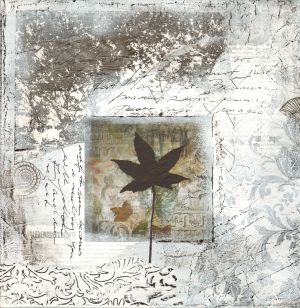 This is part two of my article on Warding in Ritual. You’ll want to read part one for this to make sense. Here are more questions that have been posed to the panel.
This is part two of my article on Warding in Ritual. You’ll want to read part one for this to make sense. Here are more questions that have been posed to the panel.
Ritual Safety
I already talked a bit about “mundane” safety, which in my work is synonymous with warding. But it would serve to go into a few more details here. Sometimes people aren’t necessarily interested in taking speaking ritual roles but might be available to help manage the door, help people with a disability, or do other work like making sure there’s kleenex or water available. That’s part of the safety of the ritual space–accommodating people’s physical needs–and thus, it’s part of warding.
Going further, the bigger your event, the more important it is to know where the exits are or what your plan is if someone trips and breaks their ankle. If you have fire, you need fire safety people. If you have people dancing in a field, you need to check the field for gopher holes. How far do people have to walk to get to the ritual? Can people with bad knees make it? Do you have anyone in a wheelchair who needs help? Is it too cold out for your outdoor ritual? Is it too warm?
Are you burning a brick of sage or perfumey incense that will set off someone’s allergies? You need to address the physical safety of the space or you can’t address the metaphysical safety of the group.
The more public your ritual, the more you may want to do outreach to the police or neighbors to let them know what you are up to. I heard about a ritual in a midwestern city which shall remain unnamed. It’s a ritual that was held monthly outside of a bar where they held their pub moot. They burned a small fire, and people had cloaks and swords. The swords were in violation of local laws, as was the fire. When the cops showed up, the ritual leaders got irate. However, this ritual was happening next to the parking lot of a bar, next to a busy road. Of course the police showed up. That’s a warding fail.
What are the different warding roles?
When I travel and facilitate rituals I rarely have access to a ritual team, so I am usually doing most of this on my own, and it works fine if I’ve outlined agreements ahead of time. But there are a few different types of warding roles. One is warding the space, another is guarding the edges. This role is often really useful if you’re doing a ritual at a public park and someone not involved in your ritual (like a cop, or someone on a picnic) wanders over to see what’s going on. There’s also the Tending role which is usually specifically for rituals where there is a drawing down/aspecting/possession. This person is there to keep an eye on the person who is possessed by a spirit/deity and help keep them safe.
Can you ward and take part in the ritual at the same time?
I think this answer applies to any ritual role. When you are facilitating rituals, your experience of the ritual is different than when you are just attending. You have to keep in mind what you are doing, what your ritual role is. You may not get to do the actual working, for instance. However, there are benefits. Often if you are leading a ritual, you’ve also planned it, which means that you’re working with those ritual energies for weeks or even months in advance, and then also after the ritual itself.
It can take a bit of practice to be able to have your own ritual experience while taking on a ritual role. I’d offer, though, that taking any kind of ritual role can lead to you (eventually) having a much deeper experience of ritual.
How many warders, and what qualifications do you need?
This one is tough for me to answer. Often, it’s just me. Whether I’m leading a ritual at a festival or conference, or leading a ritual in Chicago, it’s hard to get people to take on ritual roles of any sort. People are afraid of public speaking, for instance. And most people, I find, are not do-ers. They just want to come and experience the ritual.
I’ll expand the term “warding” to just “ritualists” for the moment. I would say that having 5-10 committed team members at a 50-person ritual can absolutely shift the energy of the whole ritual. It really helps to have at least a half dozen people, if not more, who know the ritual plan and who are committed to participating.
As for qualifications, I’d say that there is a vast spectrum and it depends on so many factors I can’t list them here. First is that the person has to be stable, reliable. I can’t give any kind of a ritual role to someone if I don’t know what’s going to happen, or if they aren’t going to show up. If they are going to be doing public speaking to the whole group, they need to be able to speak at a volume where they can be heard. I think that almost anyone can learn to take on these types of ritual roles, and it often just takes practice.
I will offer the caveat that for a specific subset of warders, more professional training is required. I’m speaking specifically to the types of rituals where people go into an intense and cathartic space and they might need pastoral counseling after the ritual. That’s something that goes beyond just ritual training.
How Do You Ward?
I’ve already addressed the physical logistics of how I approach warding. I think to answer this question I’ll talk a bit more about trance, charisma, and the woo-woo aspects. The question also specifies how I might approach warding for different kinds of work, such as a Journey, Possession, or Raising Energy. In my case, I rarely do possessory work, and I’m always working with some fashion of trance journey and energy raising. For me, most of warding is in those initial agreements, including being very clear with participants what the ritual is about.
While most of warding (for me) is in the actual space the ritual is located, and in those agreements, there’s also a certain part of warding that is in the very charisma of the facilitator. My job, as a facilitator, is to entrance and enchant the group in the spiritual working that we are doing. My job is to hold their focus.
I don’t really use circle casting as an energetic barrier, and I don’t work with the elements as actual spirits/guardians, I don’t really use athames or brooms or salt or incense. What I do use a lot is sound. Singing and drumming.
But what lies beneath that is my own charisma, my authenticity, my willingness to open up to that something larger in order to serve the group. My charisma is sourced in authenticity and that is what gives me energy and helps me bring the group to focus. That focus holds the center of the circle, and that focus holds the edges.
It’s not easy getting a group of a hundred people to sing a chant together. To dance together. To believe that the group won’t think they look stupid if they are singing and dancing and calling out to the gods for communion and connection. Most rituals I attend, people stand around and watch some folks in the center do some stuff, and when they get bored they start having side conversations. That’s a warding fail right there.
People don’t have side conversations when I do a ritual because I hold their focus. That’s as woo woo as I get about warding.
I’d say the single most effective ritual technique I use is group chanting. It works for purification, warding, trance work, energy work, you name it.
Informed Consent
Nothing is worse than arriving at a ritual and realizing that there is a bunch of stuff going on that you didn’t really want to be part of, but you feel like you can’t leave.
For me, informed consent is being very clear with participants what the ritual is about. A “warding fail” that I heard about involved a ritual that was a public sabbat. People were invited and not told what the ritual was about. It wasn’t a Samhain ritual, but after the circle was cast (it was one of those, “You can’t leave once the circle is cast” rituals), the ritualist led them down to the underworld where their flesh rotted, their faces melted off, their eyes burst and ran down their faces. I call this the “face melting trance.” This is a complete failure of a ritual; sure, you get the “surprise” factor, but nobody consented to that. No amount of magical juice in that circle casting is going to give your participants a good experience if they didn’t consent to do this work.
At the beginning, I said I’d talk about the paradox of ritual, and how warding is about ensuring safety, and yet, I don’t believe ritual is safe. Here’s what I mean by that.
First–if I’m doing ritual focused on personal transformation, I’m inviting people to face their shadows, to work with the pain they carry in their heart. That isn’t safe work. I can provide a safe place to open up and do that work, but it’s not safe.
Further, I don’t focus my energies on keeping bad spirits “out” of the ritual, because goodness…people bring in enough baggage with them. We are our own worst critics, we are the ones who get in our own way. We don’t need bad spirits to cause us grief–we do it to ourselves.
And when we ask for transformation, when we ask to connect to Mystery, to the Divine, that work isn’t safe either. Cracking open our hearts to let the light of God/Gods/Divine in means we’re going to change. That isn’t safe work.
Some people are going to have a “bad trip” no matter what I do to ensure that the ritual is set up in a safe way. I can do my very best to ensure each participant’s success by letting them know exactly what we are doing so they can be self responsible and opt out if they need to.
Consent: Mystery Vs. Safety
I don’t believe that we lose much of the Mystery of ritual when we address what’s going to happen. In fact, talking through the logistics ahead of time makes everything flow so that people can open to that Mystery. First, if I’m taking people on a journey to the Underworld to face their shadows, you bet I’m telling them ahead of time.
One time I did a ritual where we made that journey to face an old shadow, an old wound, and to offer that wound up in sacrifice to Persephone to take down into the deep earth for healing. I made very clear before the ritual started, “If you have a big pain from your past that pops up in this ritual and it’s just emotionally too much, you always have the option to take a step back. This ritual isn’t the end of the work, it’s the beginning, and if that wound is too much for you to release, acknowledge where you’re at. If you had something horrible happen to you, like childhood sexual abuse, that may be too big for this ritual to hold. You have choice in how you participate in this ritual at every step.” Participants should always be given the option to withdraw consent.
Second, if I’m doing anything complicated, like having people visit different altars around the room, or getting marked on the forehead with clay, or choosing a ribbon from a bowl, or putting a stone into water, I need to tell them all that ahead of time so that when the time comes, I don’t have to break them out of their trance groove to say, “And now we will process to the various altars and choose a ribbon from the bowl. No, not like that, over here, like this. No, you’re doing it wrong.” People feeling confused about what to do are not connecting to Mystery.
Warding and Boundaries
I think for me the essence of warding is about boundaries. In the ritual, I’m establishing that THIS is where the ritual will take place, and THESE are the people who have chosen to take part in the ritual, and THIS is our focus. You can think of boundaries as a circle, but a cauldron works well as a metaphor. You are either in the cauldron, or you’re out of the cauldron. Energy in ritual is like boiling soup; you can’t boil the soup without the cauldron, and you can think of ritual energy as spiritual heat.
When you’re establishing boundaries–warding your ritual–you’re determining what’s inside the cauldron, and what’s not. What’s in the soup, and what’s not. The single most effective thing you can do is to hold your ritual in a space you control where you won’t be interrupted and you have privacy. The next most effective thing you can do is ensure that the people attending are appropriate to attend. Anyone who can’t uphold the group agreements should be asked to leave. Finally, the core of boundaries is knowing what your ritual is about. What’s your focus? What’s your connection to that ritual focus? And how will you connect your group?
Filed under: Facilitation, Pagan Community, Ritual
Warding in Ritual
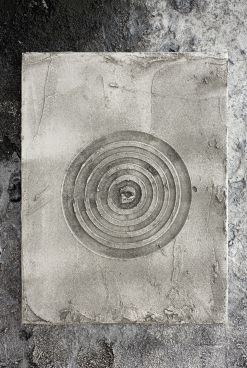 I’ve been invited to be a panelist on the topic of Warding in Ritual at Pantheacon, which is the largest Pagan conference and takes place in a few weeks in San Jose, California. The folks organizing the panel worked to create an outline of questions and topics, which is very helpful for us panelists! Since I’m thinking about all of these questions, I thought I’d work up my responses as a blog post. In fact, it’s a 2-parter, because (as I tend to) I went into some depth.
I’ve been invited to be a panelist on the topic of Warding in Ritual at Pantheacon, which is the largest Pagan conference and takes place in a few weeks in San Jose, California. The folks organizing the panel worked to create an outline of questions and topics, which is very helpful for us panelists! Since I’m thinking about all of these questions, I thought I’d work up my responses as a blog post. In fact, it’s a 2-parter, because (as I tend to) I went into some depth.
Part of why I want to think about these questions a bit is because I’m a bit of the “devil’s advocate” on the panel. Meaning, I don’t really approach warding as a magical act. For me, it’s very pragmatic. In fact, I don’t even really call it warding. And yet, that piece of what I do in a ritual is still incredibly important and is still the foundation of an effective ritual.
Let me back up a bit. I approach religion and spirituality as a pantheist. I’m not a polytheist or an animist. Heck, most days I’m barely a theist at all. It’s not that I haven’t felt the grip of divine communion, of connecting to the greater mystery, it’s just that when that happens to me, even if it’s in the form of working with a specific deity, I look at that deity as a mask, a lens, a part of the greater whole. I see the various deities and archetypes not in a polytheistic sense but as a part of the All That Is.
I’m also not a dualist. Dualism (loosely) means that there is good and evil. Duality is more commonly seen as the idea of transcendance; the idea that the body and earthly concerns are to be “transcended” and that spirit is the ultimate attainment. It implies that spirit (or “up”) is “good,” and earth/body (or “down”) is “bad. Dualism then bleeds into a lot of other dualities–white/black, male/female, etc.
Because, as a pantheist, I believe in the immanent divine–that is, that everything is already divine–I don’t believe that a ritual space needs to be cleared because it’s not impure. I believe that we need purification in the sense of focus. We can’t just go from “driving our car” to “in ritual headspace.”
Being a nondual pantheist, I don’t really work with the idea of bad spirits. In my theology, I don’t need to set up magical protections against evil spirits because I don’t believe there are spirits out there with evil intent.
But that asks the question, what does warding even mean for me?
What does warding mean?
If you’re worried about a bad spirit, I can’t help you with that, it’s not my theology. For me, warding is about the people in the room and their intentions and energies.While I don’t really do much magical warding in ritual, I see the general concept of warding as establishing a boundary of general safety for the ritual work. I’d say that in most rituals, warding serves a few primary functions.
- To protect the group from spirits or deities that might cause problems in the ritual.
- To protect the group from humans (not present at the ritual) who would harm the ritual working
- To protect the group from humans (present) who have ill intent toward one of the ritualists or ritual attendees.
- To ensure that the people at the ritual can handle the ritual working, that the ritual won’t harm them, that participants have a reasonable degree of safety within the working of the ritual.
Since, theologically/cosmologically, I don’t really work with 1 or 2, I’ll focus on 3 and 4. Now–I’ll go into this more in a bit, but I hold a paradox about ritual. My job as a ritualist is to make the work as safe as I can for the participants. And, I don’t feel that deep, transformative ritual or any ritual where we’re connecting to the divine is actually ever “safe.”
First, let me talk about my concrete, brass tacks approach to ritual warding:
- I tell people ahead of time what the ritual theme is going to be about. If we’re going on a journey to the Underworld to face our shadows, I let people know that in the email or Facebook event invite, and I also address it before the ritual begins. This gives people a chance to opt out if they aren’t prepared for such work. I feel it’s pretty rude to do an intensive ritual and not let people know ahead of time.
- I give people some general ground rules. Some are things I don’t generally have to say, like “nobody punch each other.” That one is kind of assumed. I offer a few general agreements such as:
- Self responsibility: People can leave the ritual space if they need to use the bathroom, get some water, handle a coughing fit, or even just get some space.
- They are responsible for themselves and taking care of their needs. I just ask that if they return to the ritual area they do so with respect. That can mean something as simple as opening and closing the door quietly.
- Self responsibility also extends to our emotions. Especially if I’m facilitating an intensive ritual, I offer that people are welcome to express emotions. Fear, rage, sadness. That if someone’s on the floor weeping in catharsis, I’m not going to come over and “fix” them, I’m going to trust that they are expressing an emotion and leave them to it. And, if they do need help, that they can ask for it. Or even if they need a hug. I’ll usually have my ritual team raise their hands, and I’ll also have people raise their hands that are happy to give comforting hugs if asked.
- I give participatory ground rules. Because I facilitate ecstatic, participatory ritual, I usually need to make clear that people have an obligation to participate, and that can involve speaking, moving, and singing. That participating is important to the ritual, that the ritual won’t work without each person adding their energy. And yet, I also offer choice.
- I also address safety. This can range from:
- Letting people know where the bathrooms are to letting people know how they can take care of needs like getting warmer, getting water, or sitting down.
- I make sure people understand they have a choice in how they participate in a ritual, and that even though I will be inviting them to stand, to dance, to sing, that they can stay seated if they need to, and they can ask for help bringing a chair closer to the center if they like.
- On my earlier ritual promotion emails and flyers I used to clarify “no drugs or alcohol” but I have found that it really doesn’t come up in the rituals I offer.
- I have also offered words like “all genders welcome at this ritual” which lets trans and genderfluid people know that they, too, are welcome. In essence, I let people know who is welcome and what kind of ritual work can be expected.
In essence, I let people know what behaviors are acceptable in as concise a way as I can. I don’t usually specify, “If you’re here, and that person you hate is here, don’t glare at them,” but I always say something about how I assume that everyone has come to the ritual in the spirit of mutual respect and to do spiritual work.
Ritual Space:
For me, a huge part of warding is the space the ritual is held in. When I facilitate rituals, there are usually three scenarios.
- One is I’ve rented an inside venue in Chicago, so the ritual is held in a large room.
- Or, I’m offering a ritual at a Pagan festival or conference.
- The third is when I’m offering a ritual at a public park venue, such as for a Pagan Pride event.
Where the ritual is located, and how much privacy we have, is core to the concept of warding, safety, and boundaries. There’s an intimacy I can achieve in a group ritual where the doors close that I cannot get in a ritual hosted in a public park where people are standing around watching us. Four walls, or the privacy of a grove of trees at a retreat center, are almost the definition of boundaries. Boundaries are establishing a line, a space. For me, I don’t really cast a circle, it’s more that I acknowledge that the ritual is beginning, that we’ve chosen to be here and do this work, and we are moving into sacred work. Having a good physical space for the ritual where we won’t have interruptions is key.
For instance, the energetic scenario of doing a ritual at a public park for a Pagan Pride and we have people standing around watching us is completely different from an evening ritual after we’ve all been working together for one or two days in a retreat format.
Warding Gone Bad
I can honestly say that the only times I’ve ever had a problem are when I didn’t lay out (or properly uphold) the above group agreements. Typically I facilitate deep, intensive rituals with cathartic, transformative work. I use ecstatic techniques, and there’s often a significant part of the ritual where people are facing shadows or releasing wounds from their past, transforming their pain…really intensive work. In the Reclaiming tradition there’s a phrase for this, “Puking Cauldron” rituals, because sometimes the ritual gets “taken over” by the most overdramatic person who needs a lot of attention.
However, I don’t have this happen in my rituals, largely because I set up pretty clear agreements for behavior.
That being said…there was this one time where I had a guy in my ritual. We’ll call him Anger Management Guy. Without getting into too many details, I was asked to teach some classes on ritual technique and lead an Imbolc ritual for a midwestern Pagan group.
When I arrived, Anger Management Guy was the one who picked me up at the bus station. We had to stop off at his house so he could smoke pot before he took me to the venue where I was going to teach the Friday night class. The guy was very agitated, and he and his very pregnant wife seemed to have a strange dynamic that set off my red flags. But, I was a guest, so I brushed it off. The next day, during the Imbolc ritual, I had three people (including his wife) taking on the role of various Brigids during the ritual. I stood at the altar of Brigid of the Forge.
We were chanting as each ritual participant went to the different Brigid altars. When Anger Management Guy went over to his wife’s altar, he flaked out. He started actually seething, rocking back and forth, shaking, spouting out nonsense.
Now–I was able to manage it in the moment, however, this shouldn’t have ever happened because I should have trusted my instincts about this guy and not allowed him into the ritual. During the car ride from the bus stop, he had told me some things about his life, and he spoke in a way that seriously concerned me.
Warding 101: Before you even look at magical options, just look at logistics. Are you doing an intensive ritual? Is that person really a good fit for the ritual? You’re there to ensure the group’s safety, and each individual’s safety. Trust your instincts, and if you’ve established what behaviors are acceptable and unacceptable, and someone crosses that line, that boundary, it’s your job to kick them out.
In fact, I’d offer that one of the most important warding jobs, particularly at a public ritual, is the person managing the door.
Warding and Psychic Attack
I’ll take that a little further and address the aspect of warding that is related to the function of group safety, and in specific, people who are worried about other people sending negative vibes from outside the ritual, or people who are inside of the ritual sending negative vibes at each other. Sometimes when people talk about warding they talk about psychic attack. A quote I often hear is, “Moonpie was at that ritual. He was psychically attacking me,” or, “Featherbottom was throwing off the energy of the whole working.”
In a purely psychic sense, I don’t really think it works like that.
One single person can throw off the energy of the room, but it usually requires action on their part. One person who keeps interrupting the facilitator, or who is sitting there glaring and being rude to people, one participant who is drunk and disorderly…there are a dozen scenarios where one participant can throw off the energy of a ritual, but simply thinking negative things at someone isn’t going to do a whole lot. It’s when people take concrete actions that things get wonky, like Anger Management Guy.
One negative participant can throw the energy off if everyone’s worried about that participant. That collective worry about aberrant behavior will throw things off. For instance, I led a ritual where one participant got more and more agitated until he left. Until he left, everyone kept glancing over at him. They weren’t paying attention to the rest of the ritual, they were worried about the guy because he’d been rude.
If the presence of an ex or someone you had a falling out with is going to throw you off as a facilitator, there’s an easy answer to the problem–that person shouldn’t be in the ritual. For instance, my ex isn’t welcome at any ritual I offer. I’m not worried he’ll send psychic energy at my ritual and throw it off from outside the ritual, because I personally don’t think energy works like that. I don’t need to protect against him because he’s not in the room.
That being said, I have twice now taken supporting ritual roles where my ex also had a ritual role. One time in specific, another ritual participant was the woman he had cheated on me with and a bunch of her friends who hated me. She literally stomped and pouted when I walked by her. If I’d been leading the ritual, she wouldn’t have been welcome, but that wasn’t my call. This basically breaks my cardinal rules of ritual facilitation, because there were enough people in the ritual who knew about the breakup with my ex, and about the cheating, and all the bad blood and drama. That many people who are aware of drama can, absolutely, throw the energy off.
And for certain, she was glaring daggers at me from across the room and wishing me ill.
In my case, I let it roll off of me because 1. I don’t believe her ill will can actually harm me, and 2. my focus was on the larger group and the integrity of the ritual. I was fully invested in helping to heal the rifts in the community that had sourced from the messy breakup, and so I was able to ignore her pouting and stomping. Ok, I admit, I laughed a little, and that helped.
Essentially, to psychically manage that ritual (since I was responsible for getting people chanting and raising energy), I had to completely, authentically, fully invest in the energy of community building and healing. I had to believe that this ritual would help that process, and that allowed me to move past any fears or nervousness I had about facilitating in a hostile environment. Because it mattered.
Part two will be posted tomorrow!
Filed under: Pagan Community, Ritual Tagged: Pagan community, Paganism, pagans, ritual, shadow work, warding, witchcraft


![shutterstock_124261102-[Converted]](https://shaunaaura.files.wordpress.com/2015/06/shutterstock_124261102-converted.jpg?w=295&h=372)


